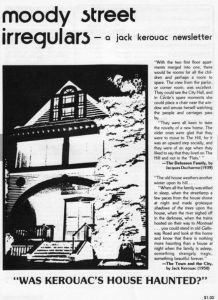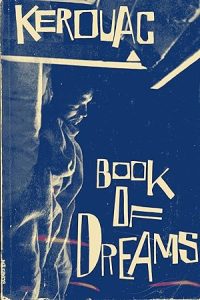 It was 1972 when I first heard of Compendium Bookshop in London. I was 21. [I was saving hard for a first trip to the USA]. In love with my idea of America and I’d not long discovered Jack Kerouac. [Thanks to Mr. Smith at evening classes and my pal Mart Postlethwaite, we shared a house]. My local branch of WH Smith was a little lacking in the Kerouac department. These were his doldrum years. Hopelessly neglected, ignored, out of print. America, for the most part, had turned their back on him. Forgive me if you are one of those who didn’t, I know there are diehards all over America. I’ve met some of them. I got down to London, down the M1, in a little blue Mini 850. I’d hardly ever been to London. Once as a ten year old on a school trip. Football matches mostly, hitching to see my team, Coventry City, play Arsenal in 1967 [September 5]. Getting a lift a mile out of Coventry from a family and their teenage daughter, they were going to the game too and took me all the way and asked if I’d like a lift back as well. I quickly said yes. They shared their sandwiches with me and I got to talk all day with a lovely girl in the back seat. It doesn’t get much better than that at 16 years old. Such kindness. Hitching with a friend Danny Cloghan simply to go to the Marquee Club, bunking off Sixth Form that same year just for the heck of it, to say we’d been there. Getting to West Ham United with my brilliant friend Steve Jossiffe [we were addictive hitchhikers] and braving the unique hospitality of ‘The Hammers’ fans. Parking was so easy though in 1972. Camden town was new to me. But I was able to park a few yards from Compendium, it had only been open since 1968. It was akin to being a kid in a Christmas shop stepping through those doors. Here were all the Jack Kerouac books I’d ever heard of and plenty I hadn’t heard of, remember I’d only just discovered his magical writing. Staring at the high floor to ceiling shelves was overwhelming. It was about ten in the morning. I was still there mid afternoon. I’d bought a few books and asked if they’d hold them behind the desk while I went out to find a cafe for something to eat. Returned, couldn’t resist buying a couple more. Until I feared my money would run out and I knew I have to put petrol in my car on the way home. Almost didn’t want to leave the shop. Felt right at home. Being so innocent and green I had no idea Camden Market was yards up the road, maybe Iain Sinclair was there, selling books? I’m recounting all this because on tidying bookshelves on this late September Autumnal Sunday morning – something I like doing periodically, reacquainting myself with the thousands of books here – I found two old copies of Jack Kerouac’s BOOK OF DREAMS. One of them is from that first visit in 1972. It still has the Compendium shop receipt in it, but also the pencil handwriting of the bookshop clerk who took my pile of books behind the desk and he wrote my name in and the price of £1.25. In later years Mike Hart would pencil in my name in books like that and keep them for me when I’d make, what seemed like monthly visits. But Mike wasn’t there in 1972 as far as I know. Could it have been Nick Kimberly I wonder? [Went to his Duck Soup bookstore a couple of times in later years] But I’m digressing yet again. The other copy of Kerouac’s Book of Dreams [I have 4 in all] I recall going to David Tobin’s bookstore close to Compendium, tucked away in a backstreet and finding it. First edition 1961 City Lights paperback. That would have been about 1974, if my memory serves me well. About £5, a lot of money then but irresistible to me. Earning about £20 a week back then. So, my dilemma this morning is – which one do I keep? That 1972 bought copy with the pencil note from the Compendium book seller, my first eye opening trip to the store, [I’m a bit sentimental about these things] or the infinitely more collectable 1961 original? It’s a tricky one. Whatever, my book tidying took my memory down to London fifty two years ago, thinking about what a place it was, for me until it closed in 2001. Mike Hart, lovely guy, really such a ‘book guy’ who wanted to share. And Chris Render, one of the Compendium founders, who seemed gruff and stern initially, but once you got to know him he’d sit in the basement with a cup of something hot on a winter’s day and talk with me while he did all the nuts and bolts jobs behind the scenes. I grew to like him, respect him, as I did Mike. It was a literary cathedral for me. Taken out of its beautiful context here a little – “Magnificent shops like Compendium in Camden Town did not survive. They were doomed because of what happened to Camden.” [Iain Sinclair – taken from his Our Unknown Everywhere Arthur Machen As Presence – Three Impostors, 2013.] Find out about Mike Hart, people loved the bloke – and Compendium at https://petermanson.wordpress.com/misc/mike-hart/
It was 1972 when I first heard of Compendium Bookshop in London. I was 21. [I was saving hard for a first trip to the USA]. In love with my idea of America and I’d not long discovered Jack Kerouac. [Thanks to Mr. Smith at evening classes and my pal Mart Postlethwaite, we shared a house]. My local branch of WH Smith was a little lacking in the Kerouac department. These were his doldrum years. Hopelessly neglected, ignored, out of print. America, for the most part, had turned their back on him. Forgive me if you are one of those who didn’t, I know there are diehards all over America. I’ve met some of them. I got down to London, down the M1, in a little blue Mini 850. I’d hardly ever been to London. Once as a ten year old on a school trip. Football matches mostly, hitching to see my team, Coventry City, play Arsenal in 1967 [September 5]. Getting a lift a mile out of Coventry from a family and their teenage daughter, they were going to the game too and took me all the way and asked if I’d like a lift back as well. I quickly said yes. They shared their sandwiches with me and I got to talk all day with a lovely girl in the back seat. It doesn’t get much better than that at 16 years old. Such kindness. Hitching with a friend Danny Cloghan simply to go to the Marquee Club, bunking off Sixth Form that same year just for the heck of it, to say we’d been there. Getting to West Ham United with my brilliant friend Steve Jossiffe [we were addictive hitchhikers] and braving the unique hospitality of ‘The Hammers’ fans. Parking was so easy though in 1972. Camden town was new to me. But I was able to park a few yards from Compendium, it had only been open since 1968. It was akin to being a kid in a Christmas shop stepping through those doors. Here were all the Jack Kerouac books I’d ever heard of and plenty I hadn’t heard of, remember I’d only just discovered his magical writing. Staring at the high floor to ceiling shelves was overwhelming. It was about ten in the morning. I was still there mid afternoon. I’d bought a few books and asked if they’d hold them behind the desk while I went out to find a cafe for something to eat. Returned, couldn’t resist buying a couple more. Until I feared my money would run out and I knew I have to put petrol in my car on the way home. Almost didn’t want to leave the shop. Felt right at home. Being so innocent and green I had no idea Camden Market was yards up the road, maybe Iain Sinclair was there, selling books? I’m recounting all this because on tidying bookshelves on this late September Autumnal Sunday morning – something I like doing periodically, reacquainting myself with the thousands of books here – I found two old copies of Jack Kerouac’s BOOK OF DREAMS. One of them is from that first visit in 1972. It still has the Compendium shop receipt in it, but also the pencil handwriting of the bookshop clerk who took my pile of books behind the desk and he wrote my name in and the price of £1.25. In later years Mike Hart would pencil in my name in books like that and keep them for me when I’d make, what seemed like monthly visits. But Mike wasn’t there in 1972 as far as I know. Could it have been Nick Kimberly I wonder? [Went to his Duck Soup bookstore a couple of times in later years] But I’m digressing yet again. The other copy of Kerouac’s Book of Dreams [I have 4 in all] I recall going to David Tobin’s bookstore close to Compendium, tucked away in a backstreet and finding it. First edition 1961 City Lights paperback. That would have been about 1974, if my memory serves me well. About £5, a lot of money then but irresistible to me. Earning about £20 a week back then. So, my dilemma this morning is – which one do I keep? That 1972 bought copy with the pencil note from the Compendium book seller, my first eye opening trip to the store, [I’m a bit sentimental about these things] or the infinitely more collectable 1961 original? It’s a tricky one. Whatever, my book tidying took my memory down to London fifty two years ago, thinking about what a place it was, for me until it closed in 2001. Mike Hart, lovely guy, really such a ‘book guy’ who wanted to share. And Chris Render, one of the Compendium founders, who seemed gruff and stern initially, but once you got to know him he’d sit in the basement with a cup of something hot on a winter’s day and talk with me while he did all the nuts and bolts jobs behind the scenes. I grew to like him, respect him, as I did Mike. It was a literary cathedral for me. Taken out of its beautiful context here a little – “Magnificent shops like Compendium in Camden Town did not survive. They were doomed because of what happened to Camden.” [Iain Sinclair – taken from his Our Unknown Everywhere Arthur Machen As Presence – Three Impostors, 2013.] Find out about Mike Hart, people loved the bloke – and Compendium at https://petermanson.wordpress.com/misc/mike-hart/
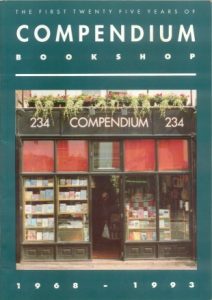
———————————————————————
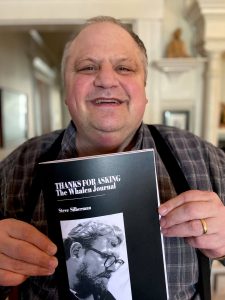
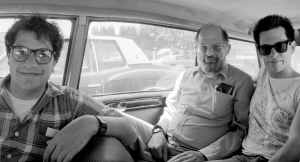
Just heard that Steve Silberman died on August 29. He was 66 apparently. My contact with Steve was fleeting. Some years ago he had an interview with Allen Ginsberg in Beat Scene. Many years later I asked if I could publish a long essay he’d written on Philip Whalen and he quickly agreed to this. And a slightly bigger Beat Scene chapbook appeared shortly after. Steve was an inveterate blogger/poster and his interests were diverse. He liked the Beat Generation, [photo here of him in a car with Allen Ginsberg – apologies, I don’t know who the other man is], he had a deep fascination for politics and a special preoccupation with Autism. His book Neuro Tribes and the Legacy of Autism and the Future of Neurodiversity was a bestseller. He did a lot of good in that field. He was a journalist, a writer, a Deadhead. Huge fan of The Grateful Dead and of David Crosby, CSNY, those guys. He seemed to know everybody. Everybody knew and respected him, loved him for his caring nature and get it done attitude. The little book I did with him went and sold within two or three days. People would contact me, having seen Steve’s photo holding the book. Simply because it was Steve’s they wanted it. All down to Steve. He was an influential figure. He seemed to fully embrace ‘social media.’ Saw its potential for good, getting the word out. Not its downside. It was simply to him, I think, such a valuable tool for positive communication. By the looks of the reaction to the news of his premature death at just 66, he will be terribly missed so much by countless people.
————————————————————————
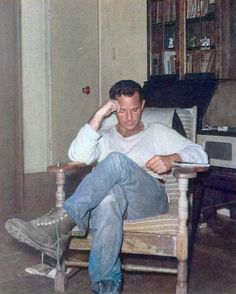 This glorious photo of Jack Kerouac sitting in a chair at the home of Neal and Carolyn Cassady in Los Gatos in 1950. First saw it in monochrome in the book Scenes Along the Road: Photographs of the Desolation Angels 1944-1960 – compiled by Ann Charters with three poems and comments by Allen Ginsberg. For the buffs amongst you [and you are legion] it was originally published by Ann and Sam Charters under their own Portents imprint – in conjunction with The Gotham Mart bookstore in NYC, back in 1970. Back then it was a sepia tinged black and white book. Still have the copy bought from the wonderful Compendium bookstore in London. Complete with the light pencilled price inside. Almost fifteen years later in 1984 [what a year] City Lights saw fit to do an edition with the cover photo ‘colourised.’ It looks brilliant. Otherworldly perhaps. More lurid than life itself, but wow. There’s a quote from Neal Cassady alongside this contemplative photo of Jack – “Where’s this guy Kerouac anyhow? Once in a while he says something good, but usually just listens to me and sometimes grunts approval; at others asks something stupid – oh well, he’s fun enough I guess and he does listen good….” Now I’m not going to list where that’s from, possibly something from Cassady’s The First Third in all likelihood. Maybe you know and can tell me. But in recent years this photograph of Jack Kerouac in the chair, listening to music it appears, big hiking boots on. Denim jeans. So maybe Jack didn’t wear ‘Chinos’ after all. Those boots, they’re big things aren’t they. Certainly not the ‘Penny loafers’ that Neal Cassady seemed to favour. What’s he listening to – ‘Handel’s Messiah’ – Chet Baker, Charlie Parker, Wardell Grey? Maybe the disc he took with the record player to Lois Sorrells to stop her from being sad? Seeing this colourised version of the photo – I’m assuming the original photo was black and white back in 1950 – a time when Neal and Jack were almost like blood brothers – it reminded me that the very first Beat Scene thing ever done was a poster using this photo. I’d written to Carolyn Cassady asking her for permission to use it. Don’t ask me how I got her address, it was 50 years years ago. But she replied. Maybe she was sojourning in one of her early stays in England. Maybe. [Letters here from Carolyn tell me I was one of a number she wrote to in England then]. Paired the picture with a few words from Jack taken from the cover of his Scattered Poems [another book bought from Compendium] £1.50 it says. Unbelievable. The words seemed quintessential Kerouac —
This glorious photo of Jack Kerouac sitting in a chair at the home of Neal and Carolyn Cassady in Los Gatos in 1950. First saw it in monochrome in the book Scenes Along the Road: Photographs of the Desolation Angels 1944-1960 – compiled by Ann Charters with three poems and comments by Allen Ginsberg. For the buffs amongst you [and you are legion] it was originally published by Ann and Sam Charters under their own Portents imprint – in conjunction with The Gotham Mart bookstore in NYC, back in 1970. Back then it was a sepia tinged black and white book. Still have the copy bought from the wonderful Compendium bookstore in London. Complete with the light pencilled price inside. Almost fifteen years later in 1984 [what a year] City Lights saw fit to do an edition with the cover photo ‘colourised.’ It looks brilliant. Otherworldly perhaps. More lurid than life itself, but wow. There’s a quote from Neal Cassady alongside this contemplative photo of Jack – “Where’s this guy Kerouac anyhow? Once in a while he says something good, but usually just listens to me and sometimes grunts approval; at others asks something stupid – oh well, he’s fun enough I guess and he does listen good….” Now I’m not going to list where that’s from, possibly something from Cassady’s The First Third in all likelihood. Maybe you know and can tell me. But in recent years this photograph of Jack Kerouac in the chair, listening to music it appears, big hiking boots on. Denim jeans. So maybe Jack didn’t wear ‘Chinos’ after all. Those boots, they’re big things aren’t they. Certainly not the ‘Penny loafers’ that Neal Cassady seemed to favour. What’s he listening to – ‘Handel’s Messiah’ – Chet Baker, Charlie Parker, Wardell Grey? Maybe the disc he took with the record player to Lois Sorrells to stop her from being sad? Seeing this colourised version of the photo – I’m assuming the original photo was black and white back in 1950 – a time when Neal and Jack were almost like blood brothers – it reminded me that the very first Beat Scene thing ever done was a poster using this photo. I’d written to Carolyn Cassady asking her for permission to use it. Don’t ask me how I got her address, it was 50 years years ago. But she replied. Maybe she was sojourning in one of her early stays in England. Maybe. [Letters here from Carolyn tell me I was one of a number she wrote to in England then]. Paired the picture with a few words from Jack taken from the cover of his Scattered Poems [another book bought from Compendium] £1.50 it says. Unbelievable. The words seemed quintessential Kerouac —
HERE DOWN ON DARK EARTH/Before we all go to Heaven/VISIONS OF AMERICA/All that hitchhikin/All that railroadin/All that coming back/to America
It seemed just the right fit. We had a sofa underneath the stairs where we lived. We had a phone, the first time for a phone. Sat on that sofa with my dog Geordie beside me. Got on the blower and sold the poster, about 150 of them, quite quickly. It went for a stupidly low price. Carolyn Cassady got some of that. And it was a pivotal moment for me. I realised things were possible. But more than that it was, to coin a phrase, a labour of love. Just like Ann Charters and her lifelong love affair with the Beat Generation, [Scenes Along the Road was more evidence of that] – it was a furtherance of my own enthusiasms. But the poser remains, what was Jack Kerouac, deep in a dream, actually listening to?
***** And, everyday I ask myself, why has nobody ever stepped in to fill the huge gap left by the disappearance of Compendium Books? It should have been like City Lights, revered and a landmark. It was the English City Lights.
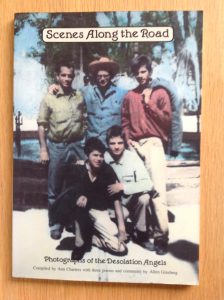
——————————————————————–
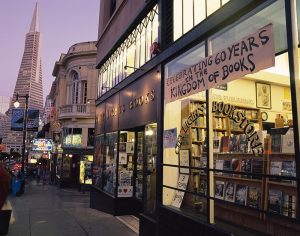 In this digital world it seems like ten seconds is an eternity. Sitting in a cafe a few days ago there was a young woman looking anxious nearby. She was struggling with a ‘smart phone.’ The smart phone was being stupid. Something to do with radio masts and connectivity or somesuch. The young girl went from anxious to utterly frustrated. Seconds later she almost threw the phone out the window. It made me yearn for the slow years. You know, posting letters, waiting for the reply, often the letters were from England, where I live, to America. You had to leave home to do this, imagine that. It could be a week or two. The anticipation was part of it all. It seemed perfectly natural. You did other things while you waited. Turned on the radio, went to work, took care of the kids. Walked the dog. [I miss him everyday I confess, my best pal, he’d come to the Post Office with me]. There was no press button One. Just press on with your life. I miss letters, from poets. Michael McClure, David Meltzer, Charles Bukowski, Janine Pommy Vega, [Janine constructed beautiful long typed letters] Diane di Prima, John Montgomery, Joy Walsh, Ann Charters, Dan Fante, even now and then, Allen Ginsberg and Lawrence Ferlinghetti. Equally the letters from Beat Scene subscribers. Often they were totally enthusiastic notes, handwritten, sometimes typed – on typewriters. Clacketty works of art. Sometimes they were notes upbraiding me, pointing out errors in the magazine. Sometimes even nasty letters telling me how rubbish Beat Scene was and why didn’t I just give up. It was just the inspiration I needed. The letters were all kept. Perhaps the biggest collection of letters was from Jim Burns, from up north near Manchester. Jim was/is a terrific letter writer. Decades of typed letters. Each one was cherished. Put away. Taken back out and read again. Noted. Full of information. A grapevine. Network through the mail. They are all still here in a big plastic tub with a lid keeping them safe and dry. There were all sorts of things in the post from publishers, New Directions, University Press of California, all those places. Press releases. One regular thing through the mail and it arrived here regularly until only fairly recently were new book catalogues from Lawrence Ferlinghetti’s City Lights Press in San Francisco. Nicely produced 30 page things. Illustrated. They told of new titles from the press. Often these were Beat Generation titles, Jack Kerouac, William Burroughs, Gregory Corso, Philip Lamantia, Charles Bukowski, Allen Ginsberg, Bob Kaufman. You could see how the press had evolved over the years. One tiny catalogue from the early days of City Lights was a simple piece of paper folded twice. In red ink. Now they don’t come anymore. They’re ‘online.’ Which is ok maybe. It’s immediate. There’s no hanging around. But that patient, slow feel of it all has vanished. Click of a keyboard kind of thing. The catalogues were and still are, very tangible. Not virtual. Those days aren’t coming back. Here’s a couple of images of one or two of those City Lights catalogues. Little documents of history.
In this digital world it seems like ten seconds is an eternity. Sitting in a cafe a few days ago there was a young woman looking anxious nearby. She was struggling with a ‘smart phone.’ The smart phone was being stupid. Something to do with radio masts and connectivity or somesuch. The young girl went from anxious to utterly frustrated. Seconds later she almost threw the phone out the window. It made me yearn for the slow years. You know, posting letters, waiting for the reply, often the letters were from England, where I live, to America. You had to leave home to do this, imagine that. It could be a week or two. The anticipation was part of it all. It seemed perfectly natural. You did other things while you waited. Turned on the radio, went to work, took care of the kids. Walked the dog. [I miss him everyday I confess, my best pal, he’d come to the Post Office with me]. There was no press button One. Just press on with your life. I miss letters, from poets. Michael McClure, David Meltzer, Charles Bukowski, Janine Pommy Vega, [Janine constructed beautiful long typed letters] Diane di Prima, John Montgomery, Joy Walsh, Ann Charters, Dan Fante, even now and then, Allen Ginsberg and Lawrence Ferlinghetti. Equally the letters from Beat Scene subscribers. Often they were totally enthusiastic notes, handwritten, sometimes typed – on typewriters. Clacketty works of art. Sometimes they were notes upbraiding me, pointing out errors in the magazine. Sometimes even nasty letters telling me how rubbish Beat Scene was and why didn’t I just give up. It was just the inspiration I needed. The letters were all kept. Perhaps the biggest collection of letters was from Jim Burns, from up north near Manchester. Jim was/is a terrific letter writer. Decades of typed letters. Each one was cherished. Put away. Taken back out and read again. Noted. Full of information. A grapevine. Network through the mail. They are all still here in a big plastic tub with a lid keeping them safe and dry. There were all sorts of things in the post from publishers, New Directions, University Press of California, all those places. Press releases. One regular thing through the mail and it arrived here regularly until only fairly recently were new book catalogues from Lawrence Ferlinghetti’s City Lights Press in San Francisco. Nicely produced 30 page things. Illustrated. They told of new titles from the press. Often these were Beat Generation titles, Jack Kerouac, William Burroughs, Gregory Corso, Philip Lamantia, Charles Bukowski, Allen Ginsberg, Bob Kaufman. You could see how the press had evolved over the years. One tiny catalogue from the early days of City Lights was a simple piece of paper folded twice. In red ink. Now they don’t come anymore. They’re ‘online.’ Which is ok maybe. It’s immediate. There’s no hanging around. But that patient, slow feel of it all has vanished. Click of a keyboard kind of thing. The catalogues were and still are, very tangible. Not virtual. Those days aren’t coming back. Here’s a couple of images of one or two of those City Lights catalogues. Little documents of history.
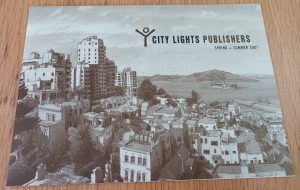
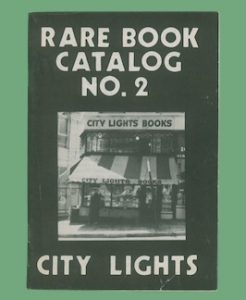
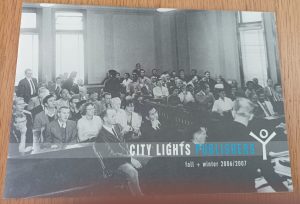
—————————————————————-
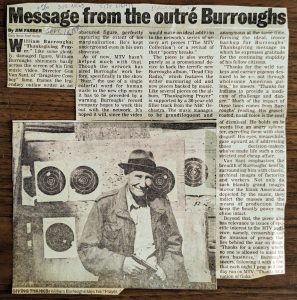 A good number of years ago I had a visit to London. Went down on the train. Unusual for me, much prefer to drive. But it had got increasingly difficult to get about the city, parking, and so on. There was a rare William Burroughs exhibit on at the National Portrait Gallery. Now I’m not especially a William Burroughs devotee. Long been interested in him. He’s an integral part of America’s Post World War Two literary landscape. He’s up there with Jack Kerouac, Allen Ginsberg and others. Some of them almost like those Mount Rushmore rock edifices – remember them – South Dakota. They appeared in 1925. Most know of them from that classic Cary Grant film North By Northwest – one of Alfred Hitchcock’s best remembered. A film that stayed in my mind after being taken to see it on release in 1959 by my lovely uncle and aunt Billy and Pauline. But I digress. I read the biographies, Ted Morgan, Barry Miles, the Graham Cavaney one too. But Burroughs novels disturb me, even scare more. Some might say, that’s his intention. Shake up the thought processes. Wake us from our slumber. Stop us sleepwalking to oblivion. And I can see that. But they are invariably dystopian and not for the faint hearted. But if his books can be disturbing, and I’m not alone in thinking this, Lawrence Ferlinghetti, at City Lights, was reluctant to publish his novels and, of course, Burroughs was pilloried in the press. But his themes – it is clear, are honourable. His life a mission. His aim to alert us all to the extent of manipulation and control that is exerted over us in subtle and not so subtle ways. Even our very language is an agent of control, according to William Burroughs. But as the world teeters on the edge of destruction, poverty, hunger, disease, greed, indifference, surely the words of William Burroughs, unsettling and awkward as they often are, cannot be overlooked? Getting to the gallery in London, a grand entrance, courtyard, it did cross my mind, am I in the right place? Turns out I wasn’t. Was redirected around the back. Retracing my steps it didn’t look promising. But once through a back street entrance it opened out into a fairly impressive space. A ton of Burroughs stuff to look at. His art. Call me a Philistine but Burroughs as an artist? Always been mighty dubious about that. Wandering about. Fascinating and I was the only one there – it was a Saturday too. There was a noise from somewhere. A kind of humming drone and I got pulled into it. There was a massive screen, the biggest I’ve ever seen. On it was a giant William Burroughs, seated very much like Abraham Lincoln at that memorial, where is it Washington DC [I’ve been there but it’s a blur- YES Washington DC on a trip to see Rick Peabody in Georgetown – he lived in the grounds of Avril Harriman’s grand house – huge stone edifice – being by the memorial in the early hours of a Sunday morning, deserted. All to myself.] Burroughs is intoning his THANKSGIVING PRAYER. It was awesome. The disgust, the sarcasm, the revolt poured out of him in a manner so impressive. I stood mesmerised, overshadowed by this epic screen. Burroughs with all his thoughts on the human race. Speaking of the so called ‘civilisations’ around the world, his barbs were largely centred on the ‘Land of the free, Amerika, if I can call it that. I’m thinking of Kafka here. To my mind – all television and media should be temporarily postponed and Thanksgiving Prayer should be beamed globally, exposing the hypocrisies of it all. Exposing our corrupt leaders, Africa, America, Russia, England. Everywhere. What have they done for us? Where are they leading us? Now I’m talking about this because on Demi Raven’s Outskirts of the City site [www.outskirtsofthe city.com] – devoted – in the main to William Burroughs [and by association – Brion Gysin] he has put up a little review from years ago about Burroughs and his heroic Thanksgiving Prayer. It reminded me of my trip to the gallery all those years ago. Demi and Jed Birmingham with his Burroughsian RealityStudio site [https://realitystudio.org/]are two drivers of that Burroughs story. Here is that recent magazine clipping on Demi Raven’s site. [see above]. That few minutes of Burroughs intoning, drawling his ‘prayer’ was so impressive. If he’d never done anything else, that would be brilliant enough. A damning indictment of the unthinking, uncaring side aspect of humanity. The irony of taking a day where America goes home to eat poor turkey is such good timing. Turning it upside down. Bill is there to spoil that party. Finks indeed.
A good number of years ago I had a visit to London. Went down on the train. Unusual for me, much prefer to drive. But it had got increasingly difficult to get about the city, parking, and so on. There was a rare William Burroughs exhibit on at the National Portrait Gallery. Now I’m not especially a William Burroughs devotee. Long been interested in him. He’s an integral part of America’s Post World War Two literary landscape. He’s up there with Jack Kerouac, Allen Ginsberg and others. Some of them almost like those Mount Rushmore rock edifices – remember them – South Dakota. They appeared in 1925. Most know of them from that classic Cary Grant film North By Northwest – one of Alfred Hitchcock’s best remembered. A film that stayed in my mind after being taken to see it on release in 1959 by my lovely uncle and aunt Billy and Pauline. But I digress. I read the biographies, Ted Morgan, Barry Miles, the Graham Cavaney one too. But Burroughs novels disturb me, even scare more. Some might say, that’s his intention. Shake up the thought processes. Wake us from our slumber. Stop us sleepwalking to oblivion. And I can see that. But they are invariably dystopian and not for the faint hearted. But if his books can be disturbing, and I’m not alone in thinking this, Lawrence Ferlinghetti, at City Lights, was reluctant to publish his novels and, of course, Burroughs was pilloried in the press. But his themes – it is clear, are honourable. His life a mission. His aim to alert us all to the extent of manipulation and control that is exerted over us in subtle and not so subtle ways. Even our very language is an agent of control, according to William Burroughs. But as the world teeters on the edge of destruction, poverty, hunger, disease, greed, indifference, surely the words of William Burroughs, unsettling and awkward as they often are, cannot be overlooked? Getting to the gallery in London, a grand entrance, courtyard, it did cross my mind, am I in the right place? Turns out I wasn’t. Was redirected around the back. Retracing my steps it didn’t look promising. But once through a back street entrance it opened out into a fairly impressive space. A ton of Burroughs stuff to look at. His art. Call me a Philistine but Burroughs as an artist? Always been mighty dubious about that. Wandering about. Fascinating and I was the only one there – it was a Saturday too. There was a noise from somewhere. A kind of humming drone and I got pulled into it. There was a massive screen, the biggest I’ve ever seen. On it was a giant William Burroughs, seated very much like Abraham Lincoln at that memorial, where is it Washington DC [I’ve been there but it’s a blur- YES Washington DC on a trip to see Rick Peabody in Georgetown – he lived in the grounds of Avril Harriman’s grand house – huge stone edifice – being by the memorial in the early hours of a Sunday morning, deserted. All to myself.] Burroughs is intoning his THANKSGIVING PRAYER. It was awesome. The disgust, the sarcasm, the revolt poured out of him in a manner so impressive. I stood mesmerised, overshadowed by this epic screen. Burroughs with all his thoughts on the human race. Speaking of the so called ‘civilisations’ around the world, his barbs were largely centred on the ‘Land of the free, Amerika, if I can call it that. I’m thinking of Kafka here. To my mind – all television and media should be temporarily postponed and Thanksgiving Prayer should be beamed globally, exposing the hypocrisies of it all. Exposing our corrupt leaders, Africa, America, Russia, England. Everywhere. What have they done for us? Where are they leading us? Now I’m talking about this because on Demi Raven’s Outskirts of the City site [www.outskirtsofthe city.com] – devoted – in the main to William Burroughs [and by association – Brion Gysin] he has put up a little review from years ago about Burroughs and his heroic Thanksgiving Prayer. It reminded me of my trip to the gallery all those years ago. Demi and Jed Birmingham with his Burroughsian RealityStudio site [https://realitystudio.org/]are two drivers of that Burroughs story. Here is that recent magazine clipping on Demi Raven’s site. [see above]. That few minutes of Burroughs intoning, drawling his ‘prayer’ was so impressive. If he’d never done anything else, that would be brilliant enough. A damning indictment of the unthinking, uncaring side aspect of humanity. The irony of taking a day where America goes home to eat poor turkey is such good timing. Turning it upside down. Bill is there to spoil that party. Finks indeed.
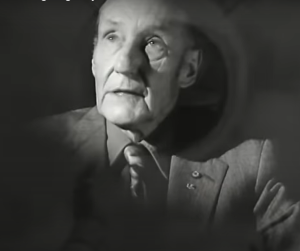
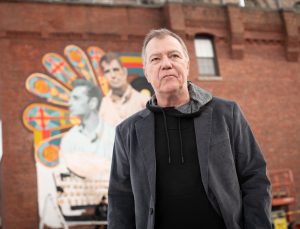 Photo here of Charlie Gargiulo from Lowell in Massachusetts, Jack Kerouac’s hometown. Charlie still lives somewhere locally – read below his book, his account of living in ‘Little Canada’ in the early 1960s, before the area was bulldozed and the spirit, soul and community was basically gone. All in the name of ‘redevelopment’ – but really for profit, with not a thought for the thousands of people dispersed. Charlie is pictured by the Jack Kerouac mural on one of the walls of the big church where Jack was an altar boy at one stage in his young life. It is the planned site of a proposed Jack Kerouac centre, the church being remodelled and preserved. A vestige of the old community. The area was dear to Kerouac, read his ‘Lowell Books’ – Maggie Cassidy, The Town and the City, Doctor Sax, Visions of Gerard. It was equally dear to Charlie. Quite fittingly the book is written from his 11 year old perspective. Brilliant, evocative history.
Photo here of Charlie Gargiulo from Lowell in Massachusetts, Jack Kerouac’s hometown. Charlie still lives somewhere locally – read below his book, his account of living in ‘Little Canada’ in the early 1960s, before the area was bulldozed and the spirit, soul and community was basically gone. All in the name of ‘redevelopment’ – but really for profit, with not a thought for the thousands of people dispersed. Charlie is pictured by the Jack Kerouac mural on one of the walls of the big church where Jack was an altar boy at one stage in his young life. It is the planned site of a proposed Jack Kerouac centre, the church being remodelled and preserved. A vestige of the old community. The area was dear to Kerouac, read his ‘Lowell Books’ – Maggie Cassidy, The Town and the City, Doctor Sax, Visions of Gerard. It was equally dear to Charlie. Quite fittingly the book is written from his 11 year old perspective. Brilliant, evocative history.
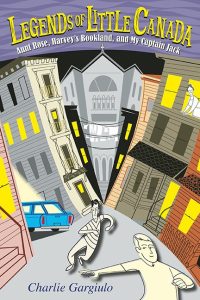
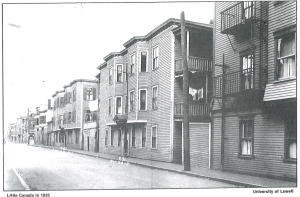
Late last night I found a package had come through my letterbox. I was just about to go to bed. It was a long day. The day had started at 5 a.m. for me. My wife was away in London with our daughter. So it had been a full on working day for me. It was a book. Legends of Little Canada [see above] by someone called Charlie Gargiulo. Now I know Charlie, first met him in Lowell, Massachusetts maybe about 45 years ago. Roughly my age and someone I took an instant liking to. He was a young bloke who showed me around Kerouac’s Lowell. I’d been there a few times before and other Lowellites had shown similar kindness. Back then Charlie was passionate about social equality, a fair deal for working people. And he wasn’t afraid to shake people up in working towards that. And into the mix, he loved Jack Kerouac’s works, even though he told me he was late in discovering him. You probably won’t believe this, but in the 1970s in Lowell Kerouac was a dirty secret. The average resident had never heard of him. Jack Who? I heard this everywhere I went. But there was a pocket of people who tried to keep his name alive in the city. Charlie was right at the heart of that. Charlie had a bunch of friends, to my surprise they were all big into British pop music. The Dave Clark Five of all bands. It puzzled me. Their heyday was long gone. But we had a fun night listening to their LPs and bands like The Kinks. It felt like a time warp, but a good one. I visited a few more times in the 1980s. And now, this book. Well, I put it on the shelf and went to bed. But my dreams woke me I’m trying to find Charlie’s house from back then. In my memory it was near a Greek church with a silver dome, by a canal. Going down all these Lowell streets near Merrimack, the main downtown street. The dream seems on a loop. I get up. Go downstairs and start reading Charlie’s book and I tell you, I’m instantly hooked. Charlie writes from the viewpoint of his 12 year self. He’s a young boy who has been forced, with his mother, to move from Dracut to Little Canada, a more affordable area. There is a reason this has happened and it is an important, crucial reason. But I won’t tell you. I want you to read this book. If you have read Kerouac you’ll know where Little Canada is, or was. It was central to Kerouac’s Lowell books, his life. And here’s Charlie Gargiulo writing about his own life there. It is the early part of the 1960s. I’m 65 pages in. And I’m hooked. Jack Kerouac was alive and sometimes living in Lowell in this decade. But he is a shadow in his hometown. The ex High School football player hero is mostly forgotten in these times. Not sure what’s coming next in Charlie’s book. He’s facing his schoolkid demons. The Catholic church looms large. The priests and the nuns. The book is about Charlie Gargiulo’s Little Canada, a gritty working class area of Lowell. These are his young boy’s memories of it. Beautiful. Have just finished the book and it continues to inform, real history about this unique place in Lowell. Right next to the big Catholic church where the special priest Father Spike Morrissette comforted a young Jack Kerouac when he told the warm hearted priest that he wanted to be a writer. It’s a life affirming book, in spite of the destruction of ‘Little Canada’ Charlie Gargiulo paints a picture, a ‘bookmovie’ to use a Kerouac phrase, of this young kid, his friends, his band of brothers, creating their own magic in this gritty town of Lowell. Bad things happen, but there’s always light to be found. I can put my hand on this old heart of mine and safely say Kerouac himself would have laughed and cried and absolutely loved this book. The book has won approval around Lowell. It’s real history. Yet, shockingly I’ve heard that the Lowell National Park Service won’t stock the book. It ruffles too many corporate feathers. And what they did in the name of ‘Urban Renewal.’ They should hang their heads in shame. Whatever happened to the ‘Land of the Free?’ There is an interview with Charlie on the local TV network – https://www.youtube.com/watch?v=7g1omMCvNvk – where he talks with Dean Contover, another who played his part in Kerouac’s revival way back. And I had a the pleasure of meeting Dean a number of times in Lowell. Go to www.loompress.com – for information – OR if in the UK or Europe maybe – go to https://gazellebookservices.co.uk/
——————————————————————————————————
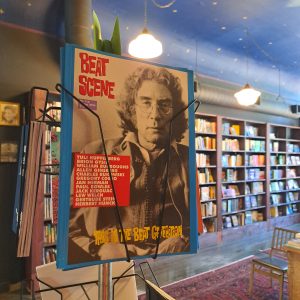 Beat Scene Number 110 is out and if you live in the Americas you might like to know you can pick a copy up from Maze Books in Rockford, Illinois. Go to 406 E. State Street, Rockford, Illinois 61104. Email mazebookshop@gmail.com
Beat Scene Number 110 is out and if you live in the Americas you might like to know you can pick a copy up from Maze Books in Rockford, Illinois. Go to 406 E. State Street, Rockford, Illinois 61104. Email mazebookshop@gmail.com
MORE ON MAZE BOOKS – Dave Pedersen and his partner Kim are interviewed on film just a day or so ago. Go to the Destination Unknown site on Youtube run by Max Ruback and look for Episode 12 ‘Maze Books.’ It is around 50 minutes.
————————————————————————————-
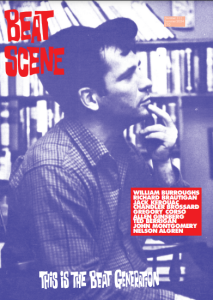 Coming in the not too distant future – Beat Scene 111. Working steadily towards a new issue. Much William Burroughs, Jack Kerouac – naturally. But also Nelson Algren, John Montgomery, Ted Berrigan, Aram Saroyan, Richard Brautigan and more. Pre-orders being taken now – recent issues went quickly. Contact kevbeatscene@gmail.com
Coming in the not too distant future – Beat Scene 111. Working steadily towards a new issue. Much William Burroughs, Jack Kerouac – naturally. But also Nelson Algren, John Montgomery, Ted Berrigan, Aram Saroyan, Richard Brautigan and more. Pre-orders being taken now – recent issues went quickly. Contact kevbeatscene@gmail.com
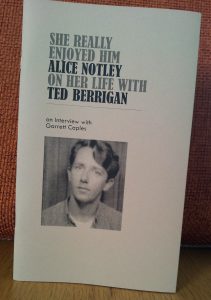
Ted Berrigan, a livewire poetry man. Known in Beat Generation circles as the man who went to interview Jack Kerouac in his twilight years on behalf of The Paris Review, whose poetry editor was his pal Tom Clark. Berrigan, very much a new wave New York School poet, if any tag is really needed, friend of another livewire, Anne Waldman and others like Clark, Joe Brainard, Lewis Warsh, Dick Gallup and the list goes on. Interviewing Jack Kerouac with him were Aram Saroyan and Duncan McNaughton. But who was Ted Berrigan, he dropped off the planet well before his time? In a new Beat Scene Press chapbook his wife Alice Notley, a feted poet in her own right, recalls him. The chapbook is in the regular 8″x5″ inches format with fold over covers, an edition of 125 numbered copies. If anyone is interested contact me on kevbeatscene@gmail.com
———————————————————————————–
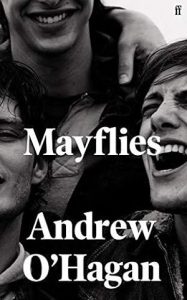 Most of the time, reading time, is taken up with Beat Generation books around these parts. But now and again the BG tunnel vision goggles come off. The name Andrew O’Hagan always stuck in the memory banks, ever since he became a semi regular writing for The Guardian newspaper some years ago. One of his areas of interest seemed to be Jack Kerouac. Recently he was interviewed – promotion for a new book of his. Part way through the interview a book of his was alluded to – Mayflies. A story of youthful dreams and growing up. Got a copy and in-between Beat Scene duties it has proved a big hit here. I’m saving the final fifty pages to read later. It’s a deeply emotional, poignant book. A group of young lads travel from their homes in Ayrshire to go to the G-Mex and Hacienda in Manchester. It is 1986, the heyday of so many bands like New Order, Joy Division, The Fall, The Smiths et al. The lads leave behind the dereliction of where they live, destroyed by the cruel policies of Margaret Thatcher’s Conservative party of the times. The Miner’s Strike. In amongst all the teenage chaos it is a story of young friendship, bonds. The central character, one of them, Tully, is finely drawn. His ‘oppo’ is ‘Noodles.’ Suspect that ‘Noodles’ is a stand in for Andrew O’Hagan. The second half of the book begins in 2017. Don’t really want to give too much away. It’s a special book. ‘Noodles’ is talking of being with a 90 year old Carolyn Cassady, interviewing her in her mobile home in Bracknell, near Reading. There’s a line from Carolyn in the conversation there ‘They were just boys,” she said, “and the romance of it all lay in knowing they’d seen the sun together.” And ‘Noodles’ is relating this memory to a lady bishop friend of his. The book is movingly, brilliantly poetic. Looking forward to those last fifty pages. Mayflies was published originally in 2020.
Most of the time, reading time, is taken up with Beat Generation books around these parts. But now and again the BG tunnel vision goggles come off. The name Andrew O’Hagan always stuck in the memory banks, ever since he became a semi regular writing for The Guardian newspaper some years ago. One of his areas of interest seemed to be Jack Kerouac. Recently he was interviewed – promotion for a new book of his. Part way through the interview a book of his was alluded to – Mayflies. A story of youthful dreams and growing up. Got a copy and in-between Beat Scene duties it has proved a big hit here. I’m saving the final fifty pages to read later. It’s a deeply emotional, poignant book. A group of young lads travel from their homes in Ayrshire to go to the G-Mex and Hacienda in Manchester. It is 1986, the heyday of so many bands like New Order, Joy Division, The Fall, The Smiths et al. The lads leave behind the dereliction of where they live, destroyed by the cruel policies of Margaret Thatcher’s Conservative party of the times. The Miner’s Strike. In amongst all the teenage chaos it is a story of young friendship, bonds. The central character, one of them, Tully, is finely drawn. His ‘oppo’ is ‘Noodles.’ Suspect that ‘Noodles’ is a stand in for Andrew O’Hagan. The second half of the book begins in 2017. Don’t really want to give too much away. It’s a special book. ‘Noodles’ is talking of being with a 90 year old Carolyn Cassady, interviewing her in her mobile home in Bracknell, near Reading. There’s a line from Carolyn in the conversation there ‘They were just boys,” she said, “and the romance of it all lay in knowing they’d seen the sun together.” And ‘Noodles’ is relating this memory to a lady bishop friend of his. The book is movingly, brilliantly poetic. Looking forward to those last fifty pages. Mayflies was published originally in 2020.
———————————————————————————————————————–
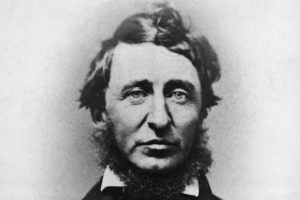 “Sometimes a mere marginal mark signifies a change in the literary landscape, like a jet of lava from a dormant volcano. In a copy of Thoreau’s Walden, next to an underlined ‘the traveller must be born again on the road’ is a small neat tick. The copy borrowed from a library in 1949 and not returned, was marked by Jack Kerouac.” [page 241 of The Bookseller’s Tale by Martin Latham – Penguin paperback 2020]
“Sometimes a mere marginal mark signifies a change in the literary landscape, like a jet of lava from a dormant volcano. In a copy of Thoreau’s Walden, next to an underlined ‘the traveller must be born again on the road’ is a small neat tick. The copy borrowed from a library in 1949 and not returned, was marked by Jack Kerouac.” [page 241 of The Bookseller’s Tale by Martin Latham – Penguin paperback 2020]
—————————————————————————————
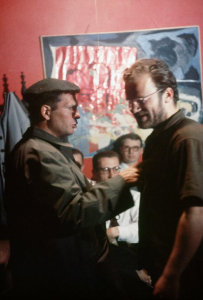
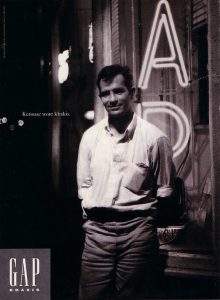 It is said that Jack Kerouac wore Chinos. Remember that rapacious, greedy advert where Maddison Avenue types press ganged Jack, long after he had left the planet, and tried to use him to sell clothes. Late 1970s, maybe 1980s. Jack would have been horrified, no question. He had his dignity. By then his ‘cool’ factor had gone up again. Whatever that idiot term means anyway. After his 1960s/1970s doldrums. When, as the saying goes, he couldn’t get arrested. Dead or alive. They used him, flogged a few units of these trousers and moved on to the next ‘cool’ individual in order to sell their wares. I would imagine, Jack being careful with his money, that he got his trousers from the working man’s store. Did he wear Levi Jeans, Wranglers? Not GAP, or Burton’s the tailors. As long as they were hard wearing he wouldn’t be that fussed. Trousers are trousers after a long day hitching rides to Butte, Montana. Now berets and bongos. We’re into different territory here. Berets, the headgear of ‘Beatniks.’ Not to be mistaken for ‘Beats.’ Two entirely different species. Beatniks [No thanks Herb Caen] – were like ‘Weekend Hippies.’ They were the ones with the berets, often the bongos, often with the little goatee beards. And apparently they clicked their fingers as a sign of appreciation when a poet read. And they were, here’s that idiot word again, ‘cool.’ Beats were the opposite of all that nonsense. No finger clicking, rarely a little goatee beard. Have read that instead of being cool some observers tagged them as ‘hot.’ Remember Kerouac talking about those individuals who were ‘mad to live.’ And they certainly didn’t wear berets. Well Ted Joans did, but Ted was spoofing it and getting paid. Poets got to live, just like plumbers. So Ted always gets let off for that. And, Lawrence Ferlinghetti did don one now and then, but, remember, he was an artist & painter and likely didn’t want paint on his bonce. So functionality at work there. Well, ok. But here’s a photo that has always puzzled and dismayed me a touch. Jack Kerouac in wearing a beret scandal. And saved for posterity in colour to boot. There is another picture, Jack with a young lady, possibly the same day, that has done the rounds. So double trouble for Beret wearing Jack. Or is it a beret? More eagle eyed observers may tell me it’s a flat cap. Now Jack did wear one of those from time to time. Let me know what you think.
It is said that Jack Kerouac wore Chinos. Remember that rapacious, greedy advert where Maddison Avenue types press ganged Jack, long after he had left the planet, and tried to use him to sell clothes. Late 1970s, maybe 1980s. Jack would have been horrified, no question. He had his dignity. By then his ‘cool’ factor had gone up again. Whatever that idiot term means anyway. After his 1960s/1970s doldrums. When, as the saying goes, he couldn’t get arrested. Dead or alive. They used him, flogged a few units of these trousers and moved on to the next ‘cool’ individual in order to sell their wares. I would imagine, Jack being careful with his money, that he got his trousers from the working man’s store. Did he wear Levi Jeans, Wranglers? Not GAP, or Burton’s the tailors. As long as they were hard wearing he wouldn’t be that fussed. Trousers are trousers after a long day hitching rides to Butte, Montana. Now berets and bongos. We’re into different territory here. Berets, the headgear of ‘Beatniks.’ Not to be mistaken for ‘Beats.’ Two entirely different species. Beatniks [No thanks Herb Caen] – were like ‘Weekend Hippies.’ They were the ones with the berets, often the bongos, often with the little goatee beards. And apparently they clicked their fingers as a sign of appreciation when a poet read. And they were, here’s that idiot word again, ‘cool.’ Beats were the opposite of all that nonsense. No finger clicking, rarely a little goatee beard. Have read that instead of being cool some observers tagged them as ‘hot.’ Remember Kerouac talking about those individuals who were ‘mad to live.’ And they certainly didn’t wear berets. Well Ted Joans did, but Ted was spoofing it and getting paid. Poets got to live, just like plumbers. So Ted always gets let off for that. And, Lawrence Ferlinghetti did don one now and then, but, remember, he was an artist & painter and likely didn’t want paint on his bonce. So functionality at work there. Well, ok. But here’s a photo that has always puzzled and dismayed me a touch. Jack Kerouac in wearing a beret scandal. And saved for posterity in colour to boot. There is another picture, Jack with a young lady, possibly the same day, that has done the rounds. So double trouble for Beret wearing Jack. Or is it a beret? More eagle eyed observers may tell me it’s a flat cap. Now Jack did wear one of those from time to time. Let me know what you think.
———————————————————————————
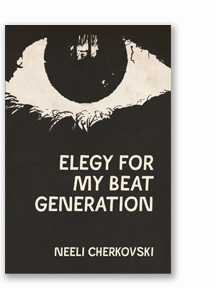
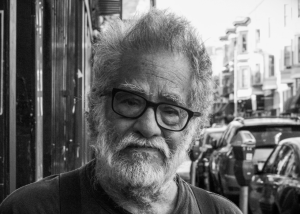
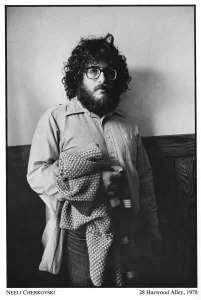
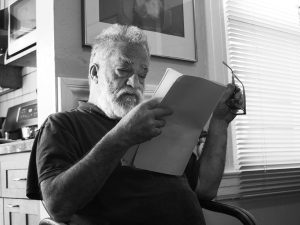
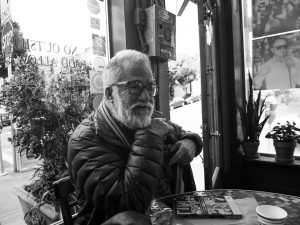
Neeli Cherkovski died a few weeks ago. He was 78 years old. A real San Francisco, North Beach poet. A young film maker Kyle Harvey made a film about him, mostly going about his daily life, walking his dog, being at home, doing poetry readings, catching the bus, writing poetry, reading his books, totally absorbed by the writing life. If you know of him you’ll recall him writing biographies of Lawrence Ferlingetti and then his big friend Charles Bukowski. They also published 3 issues of a poetry magazine way back together. There was also his book Whitman’s Wild Children, histories of poets like Michael McClure, Ferlinghettti, John Wieners, Bob Kaufman, Allen Ginsberg, Gregory Corso, Jack Micheline, Philip Lamantia and others you’ll know. It should be reissued. Besides that a string of poetry books from him over the years. This is a warm, intimate film, a picture of a man who lived for poetry. Steeped in it. Take a look at the site devoted to him. Neelicherkovski.com – Nicely designed on the net. Look for IT’S NICE TO BE WITH YOU, ALWAYS: A FILM ABOUT NEELI CHERKOVSKI on Youtube
——————————————————————————
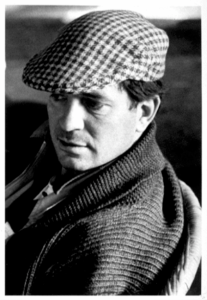 Gearing up to issue Beat Scene 110 late in May. An eclectic mix of all things Beat Generation and linked essays. But always a sharp focus on what it says on the front cover – THIS IS THE BEAT GENERATION – as one of its key observers and commentators once exclaimed in one of his astute, perceptive essays. If Gregory Corso was one of the bad boys of the Beats [I’d also rope the irascible Jack Micheline into that little gang] and Gary Snyder was CEO of the ‘Environmental wing of the Beat Generation’, then John Clellon Holmes may have been it’s major diarist. Recording the days of it all. That fifteen years where it held sway in an immediate sense, rattling the academics and staid publishing houses, bypassing them with their self published house magazines, I’m thinking of Kulchur, Yugen and the like, Black Mountain Review and suchlike. Hitting them where it hurts the most, their pockets. So, in this issue there will be Kit Knight recalling Herbert Huncke from close quarters. Kit is the wife of the late Arthur Winfield Knight. Together they pushed along a publishing venture they framed as The Unspeakable Visions of the Individual – often abbreviated to TUVOTI – of course a line from Arthur’s literary hero Jack Kerouac. Arthur is gone but Kit is well and living in Nevada. There’s Lew Welch, but from a fresh viewpoint where the accent isn’t on his ever mysterious disappearance. Paul Bowles and an early link with England – at the time still in Post War ration mode. There are interviews, photos, reviews, essays, letters. Pre-orders being taken now.
Gearing up to issue Beat Scene 110 late in May. An eclectic mix of all things Beat Generation and linked essays. But always a sharp focus on what it says on the front cover – THIS IS THE BEAT GENERATION – as one of its key observers and commentators once exclaimed in one of his astute, perceptive essays. If Gregory Corso was one of the bad boys of the Beats [I’d also rope the irascible Jack Micheline into that little gang] and Gary Snyder was CEO of the ‘Environmental wing of the Beat Generation’, then John Clellon Holmes may have been it’s major diarist. Recording the days of it all. That fifteen years where it held sway in an immediate sense, rattling the academics and staid publishing houses, bypassing them with their self published house magazines, I’m thinking of Kulchur, Yugen and the like, Black Mountain Review and suchlike. Hitting them where it hurts the most, their pockets. So, in this issue there will be Kit Knight recalling Herbert Huncke from close quarters. Kit is the wife of the late Arthur Winfield Knight. Together they pushed along a publishing venture they framed as The Unspeakable Visions of the Individual – often abbreviated to TUVOTI – of course a line from Arthur’s literary hero Jack Kerouac. Arthur is gone but Kit is well and living in Nevada. There’s Lew Welch, but from a fresh viewpoint where the accent isn’t on his ever mysterious disappearance. Paul Bowles and an early link with England – at the time still in Post War ration mode. There are interviews, photos, reviews, essays, letters. Pre-orders being taken now.
————————————————————————-
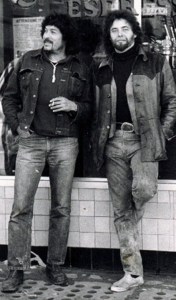 Intrigued after reading Ben Graham’s new book ELECTRIC TIBET. It has a sub title ‘American Underground Book One.’ Published by Bleeding Cheek Press (ISBN 979-8-88–057451-3) In this fictionalised account of the days around the Human Be-In during the early days of 1967, where poets such as Allen Ginsberg, Michael McClure, Gary Snyder, Lenore Kandel and others convened to try and set the tone of ‘Love’ rather than war. Remember of course, against a backdrop of Vietnam, with its daily toll of young men coming home in body bags from that American tragic war in another country, frightened as they were about the supposed ‘Communist’ threat. Napalm and all that horror. What Ben Graham seems to do in Electric Tibet is introduce other pivotal figures into that San Francisco Human Be-In equation, there’s Timothy Leary, the troubled artist Cameron, Dennis Hopper, Kenneth Anger, but none more than a figure Ben Graham calls ‘Michael Bevan.’ Fictionalised, and brilliantly so, but even so I knew him to be in reality the artist Michael Bowen, a key organiser behind the Human Be-In. [see photo above, Michael Bowen on right, beside Roberto Ayala in the 1970s, photo by Michael’s daughter Maitreya Bowen]. Now I knew Michael Bowen, largely learning of him when his daughter Maitreya, stayed here for a few days over twenty years ago. A lovely young woman. Michael Bowen, who I tried to interview without much luck, I resigned myself to letting it go, realising he was an artist, he spoke through his art, has perhaps been overlooked in some aspects. Ben Graham certainly puts that right in ELECTRIC TIBET. I still can’t get over Gary Snyder using the term ‘Groovy’ – not once but twice. A very welcome book which sheds new focus on a pivotal point in the 1960s. There is an interview with Ben Graham in Beat Scene 110, coming before too long. Another photo here of Michael Bowen in 1967 at a meeting of the Artist Liberation Front meeting in San Francisco in 1967. Alongside him are Tom Law, Ron Thelin and Frank Myerscough.
Intrigued after reading Ben Graham’s new book ELECTRIC TIBET. It has a sub title ‘American Underground Book One.’ Published by Bleeding Cheek Press (ISBN 979-8-88–057451-3) In this fictionalised account of the days around the Human Be-In during the early days of 1967, where poets such as Allen Ginsberg, Michael McClure, Gary Snyder, Lenore Kandel and others convened to try and set the tone of ‘Love’ rather than war. Remember of course, against a backdrop of Vietnam, with its daily toll of young men coming home in body bags from that American tragic war in another country, frightened as they were about the supposed ‘Communist’ threat. Napalm and all that horror. What Ben Graham seems to do in Electric Tibet is introduce other pivotal figures into that San Francisco Human Be-In equation, there’s Timothy Leary, the troubled artist Cameron, Dennis Hopper, Kenneth Anger, but none more than a figure Ben Graham calls ‘Michael Bevan.’ Fictionalised, and brilliantly so, but even so I knew him to be in reality the artist Michael Bowen, a key organiser behind the Human Be-In. [see photo above, Michael Bowen on right, beside Roberto Ayala in the 1970s, photo by Michael’s daughter Maitreya Bowen]. Now I knew Michael Bowen, largely learning of him when his daughter Maitreya, stayed here for a few days over twenty years ago. A lovely young woman. Michael Bowen, who I tried to interview without much luck, I resigned myself to letting it go, realising he was an artist, he spoke through his art, has perhaps been overlooked in some aspects. Ben Graham certainly puts that right in ELECTRIC TIBET. I still can’t get over Gary Snyder using the term ‘Groovy’ – not once but twice. A very welcome book which sheds new focus on a pivotal point in the 1960s. There is an interview with Ben Graham in Beat Scene 110, coming before too long. Another photo here of Michael Bowen in 1967 at a meeting of the Artist Liberation Front meeting in San Francisco in 1967. Alongside him are Tom Law, Ron Thelin and Frank Myerscough.
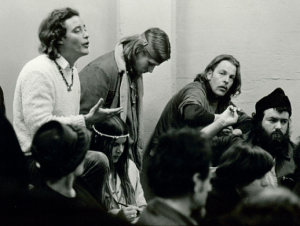
—————————————————-
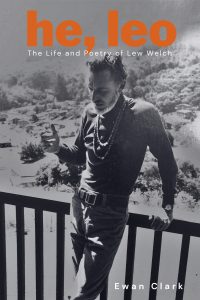 A few months back Beat Scene ran a feature on a new biography of the USA poet Lew Welch. In fact it was only the second study of Welch ever, the first being a long time ago from Aram Saroyan – Genesis Angels: The Saga of Lew Welch and the Beat Generation in 1980 – Beat Scene included an excerpt from this new book – He, Leo: The Life and Poetry of Lew Welch -biography authored by Ewen Clark and the inclusion triggered a big response with people wanting to know how to get this book. Postage from USA to the UK is prohibitive, often costing more than the book itself – so, if you are in Europe or the UK you can contact Ewen Clark directly to get hold of a copy at eclark@usgym.nl
A few months back Beat Scene ran a feature on a new biography of the USA poet Lew Welch. In fact it was only the second study of Welch ever, the first being a long time ago from Aram Saroyan – Genesis Angels: The Saga of Lew Welch and the Beat Generation in 1980 – Beat Scene included an excerpt from this new book – He, Leo: The Life and Poetry of Lew Welch -biography authored by Ewen Clark and the inclusion triggered a big response with people wanting to know how to get this book. Postage from USA to the UK is prohibitive, often costing more than the book itself – so, if you are in Europe or the UK you can contact Ewen Clark directly to get hold of a copy at eclark@usgym.nl
———————————————————————————————————————-
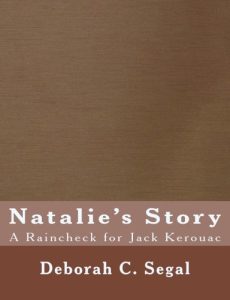
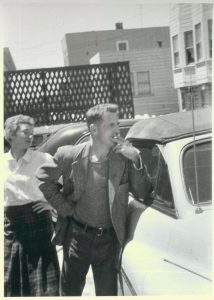 Catching up on a little reading lately Natalie’s Story: A Raincheck For Jack Kerouac by Deborah C. Segal was something that had been on the shelves here for a number of years. Decided it was about time. (Maybe the totally unimaginative cover put me off?) You might know the background to all this? Natalie was Natalie Jackson, another of Neal Cassady’s not very well hidden girlfriends as he gave his long suffering wife Carolyn the runaraound. There are photographs of them together. One in particular outside a big old school style cinema marque. They are embracing. The film showing is The Wild Ones. There are others, Neal and Natalie with Allen Ginsberg and Peter Orlovsky and Peter Dupre in the streets of San Francisco. Peter Orlovsky seems fed up with what he sees before him. You may also know Natalie’s short story. How she colluded with Neal to forge Carolyn Cassady’s signature to withdraw a significant amount of money from the family savings account. Neal – true to form – placed it on a horse he was sure was bound to win. It didn’t. They all took various drugs like smarties. Sadly for Natalie she proved more susceptible than most to the obvious side effects and it impacted her daily mental health. (I don’t care what William Burroughs said – just say NO). Anyway, there is Neal, there is Jack, there is Natalie Jackson, a police officer, Clellon Holmes, Allen Ginsberg. It would be wrong of me to give the play away. The play was an ‘Off Broadway’ production in 2012. This is the script. Plays about the Beats don’t seem to capture the imagination as novels do, this appears to be the case forever. But what Deborah Segal has done is strip down the telling of Natalie Jackson to its essence, as any decent theatrical performance should. The events of late 1955 in San Francisco were to have serious consequences for all those involved. Jack Kerouac, already laden with the burden of overwhelming Catholic guilt, left San Francisco ever more convinced of his fate in the world to quote from his Visions of Cody – “I am writing this book because we’re all going to die – in the loneliness of my own life, my father dead, my brother dead, my mother faraway, my sister and my wife far away, nothing here but my own tragic hands that once were guarded by a world, a sweet attention, that are now left to guide and disappear their own way into the common dark of all our deaths, sleeping in me raw bed, alone and stupid: with just this one pride and consolation: my broke heart in the general despair and opened up inwards to the Lord, I made a supplication in this dream.”
Catching up on a little reading lately Natalie’s Story: A Raincheck For Jack Kerouac by Deborah C. Segal was something that had been on the shelves here for a number of years. Decided it was about time. (Maybe the totally unimaginative cover put me off?) You might know the background to all this? Natalie was Natalie Jackson, another of Neal Cassady’s not very well hidden girlfriends as he gave his long suffering wife Carolyn the runaraound. There are photographs of them together. One in particular outside a big old school style cinema marque. They are embracing. The film showing is The Wild Ones. There are others, Neal and Natalie with Allen Ginsberg and Peter Orlovsky and Peter Dupre in the streets of San Francisco. Peter Orlovsky seems fed up with what he sees before him. You may also know Natalie’s short story. How she colluded with Neal to forge Carolyn Cassady’s signature to withdraw a significant amount of money from the family savings account. Neal – true to form – placed it on a horse he was sure was bound to win. It didn’t. They all took various drugs like smarties. Sadly for Natalie she proved more susceptible than most to the obvious side effects and it impacted her daily mental health. (I don’t care what William Burroughs said – just say NO). Anyway, there is Neal, there is Jack, there is Natalie Jackson, a police officer, Clellon Holmes, Allen Ginsberg. It would be wrong of me to give the play away. The play was an ‘Off Broadway’ production in 2012. This is the script. Plays about the Beats don’t seem to capture the imagination as novels do, this appears to be the case forever. But what Deborah Segal has done is strip down the telling of Natalie Jackson to its essence, as any decent theatrical performance should. The events of late 1955 in San Francisco were to have serious consequences for all those involved. Jack Kerouac, already laden with the burden of overwhelming Catholic guilt, left San Francisco ever more convinced of his fate in the world to quote from his Visions of Cody – “I am writing this book because we’re all going to die – in the loneliness of my own life, my father dead, my brother dead, my mother faraway, my sister and my wife far away, nothing here but my own tragic hands that once were guarded by a world, a sweet attention, that are now left to guide and disappear their own way into the common dark of all our deaths, sleeping in me raw bed, alone and stupid: with just this one pride and consolation: my broke heart in the general despair and opened up inwards to the Lord, I made a supplication in this dream.”
― The fallout was serious for Neal Cassady, it cast a pall over the previous fair weather year of 1955, Howl, The Six Gallery, The Dharma Bums at Milvia and in shack cabins around Berkeley. A character in Segal’s play beseeches Jack to write the Natalie book. He declines. Maybe some enterprising theatre group in England – one with an ear on the past – might take this play up. Forty years ago I recall driving in a blizzard up north after a day of teaching. To watch a dramatisation of a Kerouac thing. It was mesmerising. Students bringing these phantom figures from another planet to life. I never forgot that night. Have a feeling, with the right cast this play would resonate with many.
ISBN 978-1491040973. There is an inexpensive copy on ABE. The only one.
There is a version of the play on Soundcloud. It begins with bursts of frantic jazz and sound effects, methinks they might have overcooked it? Characters ‘proclaiming’ rather than speaking – And the cast elaborate on Segal’s script, are they hamming it up? Yes they are. For all the ham, it’s entertaining. But to me it sometimes bears little relation to Segal’s script. It runs to about an hour.
———————————————————————————————————-
Someone posted this image of the Jack Kerouac magazine Moody Street Irregulars from over 40 years ago on the net just recently. It was Joy Walsh who put it all together from her home in Buffalo. I surprised her once, about 11pm one rainy night calling in on her. She did such a good job in uniting us Kerouac readers. Loads of us here in England and Europe too. Met her again in Lowell, Mass. Joy worked in a pre broadband age. Typewriters were state of the art. She had a budget of nothing, but a lot of love for what she did. She played a very big role in helping restore the reputation of Jack Kerouac, whose name was so in the doldrums. Yesterday's man. But I digress. My lovely wife took the picture on the cover of this Moody Street, on a camera she'd had as a gift as a kid from her brilliant parents. Joy did the negative effect and it works. Dick and Jean owned the house, they had two daughters. Such kind people. Visited a few times. There's a story there, but not the time for it here. Gorgeous piano inside, stained glass front door. Dick and Jean had no idea of 'The Martin House' and how Jack Kerouac had imagined his 'Martin' family living there.
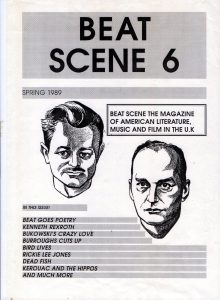 Tidying up. It’s a Saturday morning. The early morning walk is out as the rain is Monsoon like outside and it’s inclement to say the least. Tucked away on a shelf is this copy of a very early issue of Beat Scene. It isn’t one that I’ve stored away in my own personal collection. Still well preserved. Delighted to rediscover it. It was misfiled between some music magazines. Looking at the cover brought back a few memories. In 1989 I hadn’t mastered the design skills needed to layout magazine pages myself. I could type quickly though. So I was pointed in the direction of a little firm who had an office in a 1920s warehouse type building in an old part of Coventry called Itec. There a young girl Rizvana and a Scottish girl Bea laid out the magazine for me. With me often looking over their shoulders, probably very irritating for them. They really helped me progress. It was the first full sized issue. I’d just got LPs (vinyl) from Ace Records in London, they had recently reissued albums from Kenneth Rexroth and Lawrence Ferlinghetti, poetry with jazz. I nicked their cover images for this cover. There was a page on both albums inside. Rizvana was only just a young teenager, but in 1989 she was already very skilled. Remember these were early days for the technology we so take for granted now. It did cross my mind that this material would be pretty unknown for her and might even offend her, but she showed no sign of it. Bea kindly used to cycle to me and deliver proofs. This period lasted just a few short months while I picked up sufficient, rudimentary design skills to do it all myself. You can see all the elements that make up Beat Scene after all these years, they were there back then. Burroughs, Bukowski, Kerouac, Rexroth, Charlie Parker. So, this one gets put safely in a box.
Tidying up. It’s a Saturday morning. The early morning walk is out as the rain is Monsoon like outside and it’s inclement to say the least. Tucked away on a shelf is this copy of a very early issue of Beat Scene. It isn’t one that I’ve stored away in my own personal collection. Still well preserved. Delighted to rediscover it. It was misfiled between some music magazines. Looking at the cover brought back a few memories. In 1989 I hadn’t mastered the design skills needed to layout magazine pages myself. I could type quickly though. So I was pointed in the direction of a little firm who had an office in a 1920s warehouse type building in an old part of Coventry called Itec. There a young girl Rizvana and a Scottish girl Bea laid out the magazine for me. With me often looking over their shoulders, probably very irritating for them. They really helped me progress. It was the first full sized issue. I’d just got LPs (vinyl) from Ace Records in London, they had recently reissued albums from Kenneth Rexroth and Lawrence Ferlinghetti, poetry with jazz. I nicked their cover images for this cover. There was a page on both albums inside. Rizvana was only just a young teenager, but in 1989 she was already very skilled. Remember these were early days for the technology we so take for granted now. It did cross my mind that this material would be pretty unknown for her and might even offend her, but she showed no sign of it. Bea kindly used to cycle to me and deliver proofs. This period lasted just a few short months while I picked up sufficient, rudimentary design skills to do it all myself. You can see all the elements that make up Beat Scene after all these years, they were there back then. Burroughs, Bukowski, Kerouac, Rexroth, Charlie Parker. So, this one gets put safely in a box.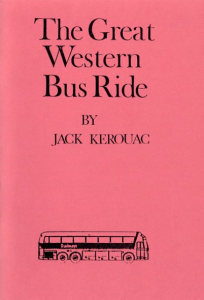 A little Jack Kerouac story in a chapbook from the 1980s. There were a whole series of them. Simply produced. Stapled things. It was a time, forty years ago when there were locks on the Jack Kerouac archives. Photocopied sheets were circulated, people were eager to read more Jack Kerouac, all around the world. These things filled a gap. Most, if not all, of the stories, poems, journals, got published a few years later. There were a lot of bootleg Jack Kerouac, Beat Generation cassettes doing the rounds as well. The 1982 Boulder Jack Kerouac conference was a source for many of these. Wonder if people still have these things.
A little Jack Kerouac story in a chapbook from the 1980s. There were a whole series of them. Simply produced. Stapled things. It was a time, forty years ago when there were locks on the Jack Kerouac archives. Photocopied sheets were circulated, people were eager to read more Jack Kerouac, all around the world. These things filled a gap. Most, if not all, of the stories, poems, journals, got published a few years later. There were a lot of bootleg Jack Kerouac, Beat Generation cassettes doing the rounds as well. The 1982 Boulder Jack Kerouac conference was a source for many of these. Wonder if people still have these things.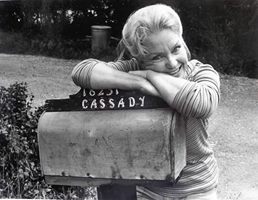


And there’s me. Moaning about precious little feedback on new issues of Beat Scene. And Alan Robertson of Falkirk sends me a lovely photo postcard of a young Gary Snyder in 1963 in Japan, training in the disciplines of Zen Buddhism. With a kind affirmative note. Thanks so much Alan. I’d first seen this picture of Gary in the Ann Charters compiled and edited book SCENES ALONG THE ROAD in the early 1970s, when buying it at the much cherished Compendium bookstore in Camden Town, Mike Hart, Chris Render & co, nice chaps. They are missed. London is not the same without them. Initially, in the store then, the photo of Gary puzzled me. It didn’t match the ‘Japhy Ryder’ pictures in my head after reading Kerouac’s THE DHARMA BUMS. Remember, this is 50 years ago, the Beats were not nearly so well documented back then. Thinking about it now, it was likely the very first photo of Gary I’d ever seen. No Google in those days of course. That was decades into the future. Looking at the book now. The original brown or sepia card covers, it still has the original Compendium price on in pencil inside – the princely sum of £1.25. Wow. And another Ann Charters project. She was and still is indefatigable. And I can tell you, she remains a fan, as well as a scholar to this day. Her enthusiasm is undimmed. Alan, thanks for the card. So kind. Now off to leaf through SCENES along the road once more. Rolling back the decades.
————————————————————————————-
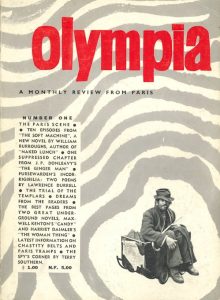
Back in 1962 Maurice Girodias, a loveable rogue if ever there was one, was looking to copy Barney Rossett’s Evergreen Review and publish his very own in house journal. He called it Olympia. It was to be a monthly review from Paris. The very first issue, a larger format paperback style, included TEN EPISODES FROM THE SOFT MACHINE by a chap called William Burroughs, then strictly a mostly unheard of cult writer, often tagged, when he was tagged, as a science fiction writer or worse, confused with Edgar Rice Burroughs. There was a Harriet Crowder photo of Burroughs alongside the episodes. Burroughs, for all that Maurice Girodias short changed him over his early works, liked Girodias. Given the cult status Burroughs then enjoyed it would be likely that many readers might have been forgiven for overlooking one short, two page, contribution from someone called Richard McBride. Girodias had contacted Lawrence Ferlinghetti over at the City Lights offices in North Beach, San Francisco, asking if he knew anyone that had recorded their dreams? Lawrence knew someone very close at hand, Richard ‘Dick’ McBride, a manager who worked for him at City Lights. Alongside working at City Lights Dick McBride was an aspiring poet and writer. His dream was, well it might be termed madcap. It involved Dostoyevsky, crucifixions, Jesus, windblasted hills in Russia, biographies, Fagin (I assume the Charles Dickens character). McBride’s wife, or partner then, plus an alluring model of those times called Rita Queen, that Dick was attracted to in the dream. Dostoyevsky was advising him to be wary. Dick full of young man lust was trying to ignore his advice. As I said, it was bonkers, madcap. Maybe Dick had read Jack Kerouac’s 1961 collection BOOK OF DREAMS? He almost certainly had as City Lights had published it in an edition of 5,000 copies months earlier. So, possibly Dick was inspired by Jack Kerouac’s book and determined to record his own nightly dream escapades. It bears the hallmarks. Dick McBride’s account may also have been lost in amongst Terry Southern and his THE SPY’S CORNER or/and Maxwell Kenton’s CANDY AND THE HUNCHBACK, plus writing from Lawrence Durrell, J.P. Donleavy, photographs by Robert Doisneau, a story by Harriet Daimler – real name Iris Owens – who penned ‘erotic’ novels for Olympia. McBride had worked at City Lights since 1954 and right through to 1969. The latter years at their publishing arm at 1562 Grant Avenue in San Francisco. Kenneth Patchen had introduced him to Lawrence Ferlinghetti and he immediately offered him a job. McBride had books published over the years. A short story of his – Haircut Dream was published in the City Lights Journal in 1963. A positive review in Kulchur magazine said: “Two of the young writers involved with visionary experiences are to be taken more seriously. Richard McBride describes a series of wild dream sequences revolving around the appearance and disappearance of Suzy Wong. Going from alley to alley, through many doors, Haircut Dream is reminiscent of the magic circus in Steppenwolf.” It had followed ORANGES in 1961, followed by BALLADS OF BLOOD, then LONELY THE AUTUMN BIRD in 1963 (essentially two short novels). During 1964 he relocated to London for six months on an exchange trip set up by Lawrence Ferlinghetti. The exchange was an effort to introduce Beat writers to UK readers and create links between the avant-garde writers of both countries. He based himself at the famed Better Books in Charing Cross Road, run by Tony Godwin, it sowed the seeds for Allen Ginsberg’s visit the following year. MEMOIRS OF A NATURAL BORN EXPATRIATE arrived in 1966. There was a gap until a memoir of Allen Ginsberg COMETH WITH CLOUDS was issued by Charles Plymell’s Cherry Valley Editions in 1982. By then McBride had moved himself to England, Buckinghamshire to be exact, and set up a book distribution business – McBride & Broadley. COMETH WITH CLOUDS is unique in being a memoir of Allen Ginsberg in England, largely away from the noise that can be London, in the shire backwaters that were then McBride’s environs. It is a special little book. Sojourns in Australia followed. His last years were spent in the Malvern area in England. A long way from North Beach.
OLYMPIA, as a journal, was short lived. Only four editions were published. Maurice Girodias was always beset by financial woes. He always ‘sailed close to the wind’ as they say in some parts. His attempts to be a European Evergreen Review were not to be. I met Dick a number of times over the years. And there are a little bundle of his letters here. His book distribution business was based, often, in leafy, sleepy, Buckinghamshire villages, old church chapels, delightful locations. He made sure a lot of ‘Beat’ books were seen in this country in the 1970s onwards. One thing I always remember, apart from one little mishap involving my four year old son Nathan, a glass of orange juice and a newly arrived copy of Dick’s very own copy of the newly published COMETH WITH CLOUDS: ALLEN GINSBERG MEMOIR by Dick himself. It had come through the letterbox as we sat talking. You can guess the rest. Mopping up, Dick, probably through gritted teeth, said don’t worry, accidents happen – But he did write a nice little story of an extended phone call from a distracted Jack Kerouac to the City Lights office way back. It appeared in a little journal I published years ago called Transit. Wish Dick had written more. He died in 2012 aged 84.
—————————————————————————————————
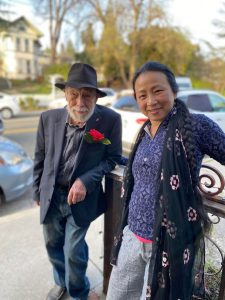
Gary Snyder, because of the current issue of Beat Scene, is in my mind a little. To remind me and you of what he’s about here is a trailer for a film by Colin Still in London. His Optic Nerve site is an Aladdin’s cave of Beat poets. Colin has filmed many American poets over the years. Gary is one of them. Here he is in fire lookout mode. The photo has Michael McClure on the left and Jack Shoemaker, I believe, on the right. Don’t know who the young guy is at the back. Perhaps somebody can tell me? Gary and Philip Whalen encouraged Jack Kerouac to do the lookout thing. They were all – Alone on a Mountain top. https://www.opticnerve.co.uk/poetry/american-poets/gary-snyder/things-to-do-around-a-lookout
——————————————————————————————————
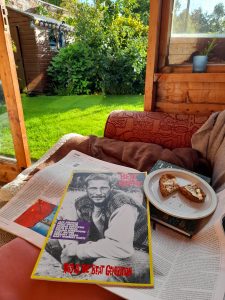
Now and then, in amongst the positives, I get the odd barbed comment, directed at Beat Scene. It is like water off a duck’s back. I imagine it is from people who have no understanding of what it takes to create and publish and do all the nuts and bolts aspects of it and maintain that for 36 years, on my own (and M.Ring). My local post office loves us, we’re in there most days, sending off issues. By the way, post costs have risen dramatically, but what’s new. I’ve seen publications come and go, some really good, imaginative things, they fold mostly because of finances. So, I gladly embrace whatever positives come my way. There isn’t that much feedback for Beat Scene to be honest, but when it does turn up on my doormat or in my email IN Box it really lifts my sometimes flagging spirits. A very recent note, last night to be exact, came from a friendly subscriber, the writer Peter Hollywood (I look forward to everything he writes), who lives in Northern Ireland – let me quote something of what Peter said in his email …”Good Lord, who is Hillary Louise Johnson? I’ve been reading and re-reading the brilliant article on Gary Snyder in the new issue. You know how much I love Snyder and this was such a joy to read. Real up-to-date (ish) info about the great man. But also, so wonderfully written. For example: ‘…he is just another woodland creature…’ or (and this is magnificent) ‘it’s a little like trying to convey the graceful lope of a bear from a paw print…’ (The alliterating of the p in lope with paw and print – words are paw prints too.)
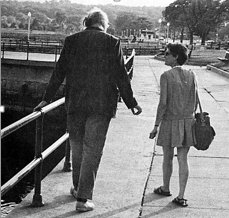
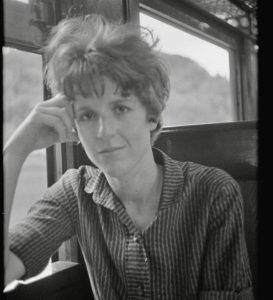
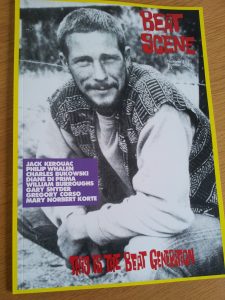
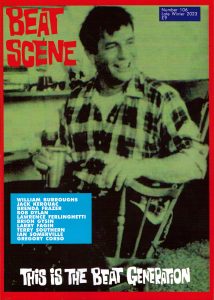 BEAT SCENE 106 is available now. Thanks for your patience. The issue includes Jack Kerouac, William Burroughs, Bob Dylan, Lawrence Ferlinghetti, Larry Fagin, Ian Somerville, Brenda Frazer, Jeff Nuttall and more besides. If you would like a copy, there is just half a box left – email kevbeatscene@gmail.com
BEAT SCENE 106 is available now. Thanks for your patience. The issue includes Jack Kerouac, William Burroughs, Bob Dylan, Lawrence Ferlinghetti, Larry Fagin, Ian Somerville, Brenda Frazer, Jeff Nuttall and more besides. If you would like a copy, there is just half a box left – email kevbeatscene@gmail.com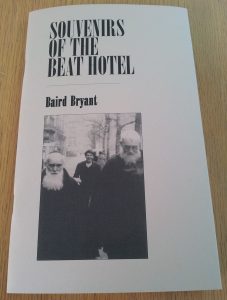 Out Now ….. SOUVENIRS OF THE BEAT HOTEL by Baird Bryant. In the Beat Scene chapbook series. Number 77 in the series.
Out Now ….. SOUVENIRS OF THE BEAT HOTEL by Baird Bryant. In the Beat Scene chapbook series. Number 77 in the series.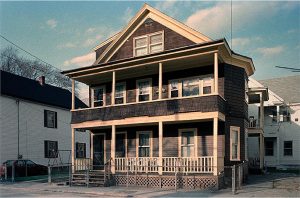 A little indulgence here. Please excuse me. Reading a note from someone from a few years back, they asked me had I ever been to Jack Kerouac’s home town of Lowell in Massachusetts? I’ve kept my note of reply. In it I said “I doesn’t seem like five minutes ago that I was standing outside the house on Lupine Road, where Kerouac was born in March 1922. It was a lovely, very early Saturday morning, gorgeous start to the day. The street was empty. We just stood staring. The house is a little out of town. A young girl came out. Asked us – nicely – what we were looking at? I told her Jack Kerouac was born here. She said – Oh, I think I’ve heard of him. But she didn’t sound so sure. She invited us in. Wow, I thought. Inside I was overcome, almost, with emotion, but displayed a stiff upper lip. The nice young woman said to me – you look like John Lennon, do you know The Beatles? She could have said Bela Lugosi, I wouldn’t have cared. This is Jack Kerouac’s birthplace, I kept telling myself. It was the early 1970s. I was just a kid.” Visited many times since, but the first visit stays with me. It was only a year or two after he died. In those times hardly any did the Kerouac pilgrimage. Mary Sampas, a reporter for the Lowell Sun told me.
A little indulgence here. Please excuse me. Reading a note from someone from a few years back, they asked me had I ever been to Jack Kerouac’s home town of Lowell in Massachusetts? I’ve kept my note of reply. In it I said “I doesn’t seem like five minutes ago that I was standing outside the house on Lupine Road, where Kerouac was born in March 1922. It was a lovely, very early Saturday morning, gorgeous start to the day. The street was empty. We just stood staring. The house is a little out of town. A young girl came out. Asked us – nicely – what we were looking at? I told her Jack Kerouac was born here. She said – Oh, I think I’ve heard of him. But she didn’t sound so sure. She invited us in. Wow, I thought. Inside I was overcome, almost, with emotion, but displayed a stiff upper lip. The nice young woman said to me – you look like John Lennon, do you know The Beatles? She could have said Bela Lugosi, I wouldn’t have cared. This is Jack Kerouac’s birthplace, I kept telling myself. It was the early 1970s. I was just a kid.” Visited many times since, but the first visit stays with me. It was only a year or two after he died. In those times hardly any did the Kerouac pilgrimage. Mary Sampas, a reporter for the Lowell Sun told me.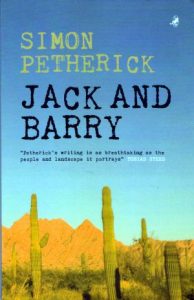
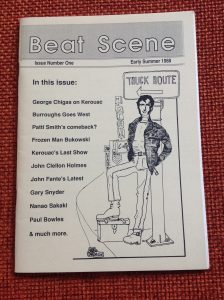 The big opening image on the top of this page features the very first issue of Beat Scene magazine. The first of five that I call the ‘church newsletter’ series. Andy Darlington did the cover artwork. Andy ran a little magazine up in Yorkshire called Ludd’s Mill. It was a mix of literary, sci fi, rock music things in the main, it could be unpredictable. Andy was kind enough to run an article of mine in it about Jack Kerouac once. I still have the issue. There were 500 copies of that first issue of Beat Scene, to my big surprise they all went. Wish there were some left. All gone. Early 1988. It was a leap into the unknown. Well I had tested the water with a couple of earlier items, one a nice Jack Kerouac poster, that went in about ten days. One hundred of them. I do believe I charged the princely sum of £2 for that. It’s been a long, sometimes strange trip. Hopefully some more twists to come.
The big opening image on the top of this page features the very first issue of Beat Scene magazine. The first of five that I call the ‘church newsletter’ series. Andy Darlington did the cover artwork. Andy ran a little magazine up in Yorkshire called Ludd’s Mill. It was a mix of literary, sci fi, rock music things in the main, it could be unpredictable. Andy was kind enough to run an article of mine in it about Jack Kerouac once. I still have the issue. There were 500 copies of that first issue of Beat Scene, to my big surprise they all went. Wish there were some left. All gone. Early 1988. It was a leap into the unknown. Well I had tested the water with a couple of earlier items, one a nice Jack Kerouac poster, that went in about ten days. One hundred of them. I do believe I charged the princely sum of £2 for that. It’s been a long, sometimes strange trip. Hopefully some more twists to come.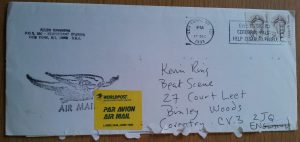
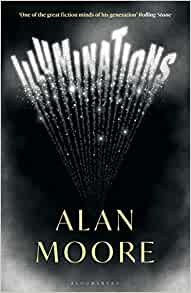
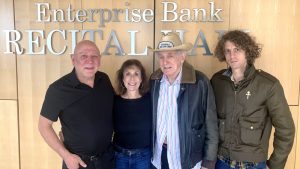
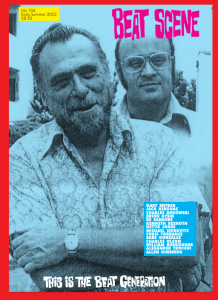
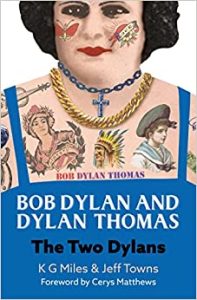 Dylan Thomas maestro Jeff Towns and co author KG Miles have come up with a terrific book BOB DYLAN AND DYLAN THOMAS: The TWO DYLANS. The book intersects with America’s Beat Generation at many points, both from the Bob perspective and the Dylan perspective. In fact there are whole sections centred around Allen Ginsberg – absolutely fixated on Dylan Thomas as he was – William Burroughs, Gregory Corso, Lawrence Ferlinghetti, Kenneth Rexroth, Jack Kerouac, Michael McClure a little surprisingly. Patti Smith features as well. On first reading the style of both writers seems, is pithy the right word? They get to the point. It’s precise, knowing, honed. They don’t cloud issues. This is what they have researched and found out regarding these two Dylans. The connections are there in plain view, they are myriad. A lot of information relayed in a relaxed style that will open eyes. It’ll please both camps, the Bob camp and the Thomas camp. Wonderful Peter Blake cover and it brings the reader some fascinating cultural leads, from 1950s Bohemia, NY drinking haunts, 1960s folk electrification and the sway that Dylan, the Welsh bard, held over Robert Zimmerman, that later flowered with the Beats and took in The Bells of Rhymney, John Cale, Arthur Rimbaud, Henry Miller, Charlie Chaplin and so much more. You’ll love it. Absolutely love it. For more information contact Jeff Towns at – Jefftowns@dylans.com
Dylan Thomas maestro Jeff Towns and co author KG Miles have come up with a terrific book BOB DYLAN AND DYLAN THOMAS: The TWO DYLANS. The book intersects with America’s Beat Generation at many points, both from the Bob perspective and the Dylan perspective. In fact there are whole sections centred around Allen Ginsberg – absolutely fixated on Dylan Thomas as he was – William Burroughs, Gregory Corso, Lawrence Ferlinghetti, Kenneth Rexroth, Jack Kerouac, Michael McClure a little surprisingly. Patti Smith features as well. On first reading the style of both writers seems, is pithy the right word? They get to the point. It’s precise, knowing, honed. They don’t cloud issues. This is what they have researched and found out regarding these two Dylans. The connections are there in plain view, they are myriad. A lot of information relayed in a relaxed style that will open eyes. It’ll please both camps, the Bob camp and the Thomas camp. Wonderful Peter Blake cover and it brings the reader some fascinating cultural leads, from 1950s Bohemia, NY drinking haunts, 1960s folk electrification and the sway that Dylan, the Welsh bard, held over Robert Zimmerman, that later flowered with the Beats and took in The Bells of Rhymney, John Cale, Arthur Rimbaud, Henry Miller, Charlie Chaplin and so much more. You’ll love it. Absolutely love it. For more information contact Jeff Towns at – Jefftowns@dylans.com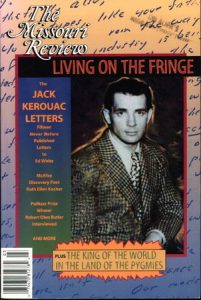
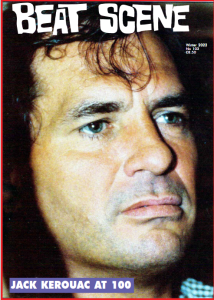 BEAT SCENE 103 is NOW SOLD OUT.
BEAT SCENE 103 is NOW SOLD OUT.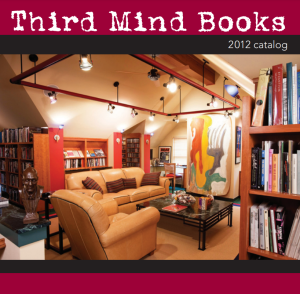
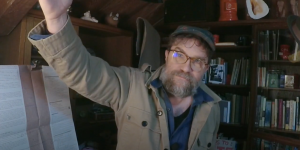 The name Dave Olson – didn’t mean a thing to me until a couple of days ago. Then a round robin email from the invaluable Beat Museum mentioned him. Dave has a Youtube channel – https://www.youtube.com/watch?v=RpRDPCMoZsM
The name Dave Olson – didn’t mean a thing to me until a couple of days ago. Then a round robin email from the invaluable Beat Museum mentioned him. Dave has a Youtube channel – https://www.youtube.com/watch?v=RpRDPCMoZsM 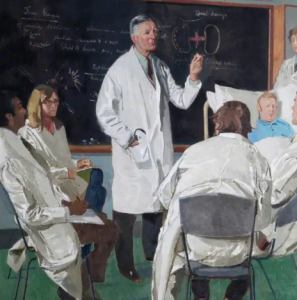 Do you recall the A. J. Lees book a year or two ago? MENTORED BY A MADMAN. Where Neurologist Andrew Lees combined his interest in writer William Burroughs with his day job as a physician. It was an out of the blue sort of book. His unorthodox approach to the healing of the mind, ran in tandem with his liking, or fascination with some of the writings of Mr. Burroughs. I think any balanced view of Burroughs thinking will take on board that at points his views seem outrageous, odd, and sometimes they hit the nail on the head. Brion Gysin seemed to edge him towards the wackier philosophies. Regardless, MENTORED BY A MADMAN: THE WILLIAM BURROUGHS EXPERIMENT – was fresh, outside the tramlines and a fine read. It appeared around the same time as another important and equally readable book by Warwick Sweeney, THE HARDY TREE where the pioneering work of John Yerby Dent met the addicted figure of William Burroughs. But I digress. Now Lees has seen a smaller book, BRAINSPOTTING: ADVENTURES IN NEUROLOGY issued as a pocket hardback by Notting Hill Editions – www.nottinghilleditions.com – And I have to say, sitting here this morning with a warming red berry tea, on a cold mid April morning, the first forty or so pages are proving totally absorbing. He twists his learning and experiences in medicine into a very readable thread with his personal life. There is birdspotting, his colour blindness, the warmth of his early family life in the North of England (his father seems like an especially good man), his fellow – mostly older, bird watchers, who seem to have been a nurturing lot, Marvin Gaye, John Clare, poet and naturalist, East London, Whitechapel, where he studied and worked, Sid’s Record Emporium by Whitechapel station, Paris, the great pioneering Neurologists of the eras. It’s a winning blend of the everyday and the progress of medicine and the power of listening and keen observation. And no William Burroughs, so far. The best thing I’ve been fortunate enough to read in ages.
Do you recall the A. J. Lees book a year or two ago? MENTORED BY A MADMAN. Where Neurologist Andrew Lees combined his interest in writer William Burroughs with his day job as a physician. It was an out of the blue sort of book. His unorthodox approach to the healing of the mind, ran in tandem with his liking, or fascination with some of the writings of Mr. Burroughs. I think any balanced view of Burroughs thinking will take on board that at points his views seem outrageous, odd, and sometimes they hit the nail on the head. Brion Gysin seemed to edge him towards the wackier philosophies. Regardless, MENTORED BY A MADMAN: THE WILLIAM BURROUGHS EXPERIMENT – was fresh, outside the tramlines and a fine read. It appeared around the same time as another important and equally readable book by Warwick Sweeney, THE HARDY TREE where the pioneering work of John Yerby Dent met the addicted figure of William Burroughs. But I digress. Now Lees has seen a smaller book, BRAINSPOTTING: ADVENTURES IN NEUROLOGY issued as a pocket hardback by Notting Hill Editions – www.nottinghilleditions.com – And I have to say, sitting here this morning with a warming red berry tea, on a cold mid April morning, the first forty or so pages are proving totally absorbing. He twists his learning and experiences in medicine into a very readable thread with his personal life. There is birdspotting, his colour blindness, the warmth of his early family life in the North of England (his father seems like an especially good man), his fellow – mostly older, bird watchers, who seem to have been a nurturing lot, Marvin Gaye, John Clare, poet and naturalist, East London, Whitechapel, where he studied and worked, Sid’s Record Emporium by Whitechapel station, Paris, the great pioneering Neurologists of the eras. It’s a winning blend of the everyday and the progress of medicine and the power of listening and keen observation. And no William Burroughs, so far. The best thing I’ve been fortunate enough to read in ages.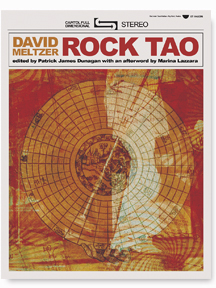 The poet David Meltzer was a longtime feature on the San Francisco poetry landscape. Poet, essayist, editor, musician, a man of much talent. Highly regarded by his peers. Almost a poet’s poet.’ Sadly David died just a few years ago. Something new from him nevertheless, kind of. ROCK TAU was something David put together in the mid 1960s but decided to shelve it back then. Right now I don’t know why this happened. But intend to find out. Lithic Press, who published a brilliant Jack Micheline collection a year or two back, have issued this larger format paperback that looks very much like an LP cover. This is entirely appropriate as David Meltzer was a great fan of rock and pop music. You’ll know, perhaps, he was an integral part of the 1960s band Serpent Power. ROCK TAU is what you might call a book of ‘Magpie Poetics’ as Anne Waldman might call it. David scouring 1960s culture of all varieties, high and low brow, if you may – ‘An invigorating rock and roll poetics – diary and prescient critique of American pop culture’ . David was an avid listener to Bay Area rock and pop radio stations, it’s a poetic commentary, the music, the advertising, the news, the 1960s were so eventful culturally, politically and Meltzer creates a brilliant collage. Go to https://www.lithicpress.com/index.php/our-catalog/126-rock-tao
The poet David Meltzer was a longtime feature on the San Francisco poetry landscape. Poet, essayist, editor, musician, a man of much talent. Highly regarded by his peers. Almost a poet’s poet.’ Sadly David died just a few years ago. Something new from him nevertheless, kind of. ROCK TAU was something David put together in the mid 1960s but decided to shelve it back then. Right now I don’t know why this happened. But intend to find out. Lithic Press, who published a brilliant Jack Micheline collection a year or two back, have issued this larger format paperback that looks very much like an LP cover. This is entirely appropriate as David Meltzer was a great fan of rock and pop music. You’ll know, perhaps, he was an integral part of the 1960s band Serpent Power. ROCK TAU is what you might call a book of ‘Magpie Poetics’ as Anne Waldman might call it. David scouring 1960s culture of all varieties, high and low brow, if you may – ‘An invigorating rock and roll poetics – diary and prescient critique of American pop culture’ . David was an avid listener to Bay Area rock and pop radio stations, it’s a poetic commentary, the music, the advertising, the news, the 1960s were so eventful culturally, politically and Meltzer creates a brilliant collage. Go to https://www.lithicpress.com/index.php/our-catalog/126-rock-tao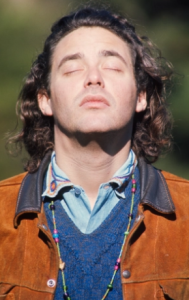
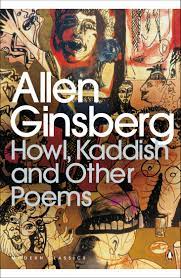
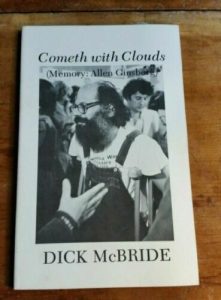
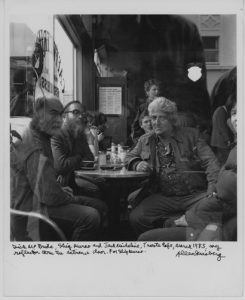 A photo of Dick McBride (left) with Shig Murao and Jack Micheline, in North Beach at the Trieste Cafe in March 1985.
A photo of Dick McBride (left) with Shig Murao and Jack Micheline, in North Beach at the Trieste Cafe in March 1985. A Beat Scene morning. This is in no way typical. Some mornings begin so early, others later. It’s possibly a legacy of being a paper boy from aged 14 until leaving school at 17. That feeling, pleasure, of being up and alive while most are still asleep. An email from Japan, asking about an old back issue of Beat Scene. Luckily there are copies left. Another email. It is 4.30 a.m. Can I send a Beat Scene Press chapbook to Finland? Of course. So that gets sorted and wrapped in a few minutes. There’s extra Customs forms to be filled in – very carefully these days. Brexit has caused some issues. There’s a proof copy of a chapbook to be checked over. How on earth did that typo happen? Thankfully it is corrected and the printer is emailed and the little book can be printed. A few minutes to open something in yesterday’s post. It is a package from Rene Van Der Voort in The Netherlands. I’ve always wondered why it changed from Holland somewhere along the way? Inside is a lovely little Gary Snyder themed chapbook, four neat postcards of Burroughs, Ginsberg, Huncke and John Wieners with Carl Solomon. Also a brand new cassette of Charles Plymell. Yes a cassette. Rene likes them. I do too. A welcome Round Robin email from the Beat Museum comes in. Jerry Cimino has done a wonderful job in maintaining that bricks and mortar place in San Francisco’s North Beach for twenty years now. Just across the road from City Lights – and steered it through this dratted virus, lockdowns. Him and his team have come up with imaginative ways to keep going during lockdowns. To me it seems that if you are a Beat reader going to the Beat Museum should be on your Bucket List. Is that the term? And they include all the writers, artists etc that go to make up that figment of Allen Ginsberg’s imagination ‘The Beat Generation.’ Well done Mr. and Mrs. Cimino. You should be proud.
A Beat Scene morning. This is in no way typical. Some mornings begin so early, others later. It’s possibly a legacy of being a paper boy from aged 14 until leaving school at 17. That feeling, pleasure, of being up and alive while most are still asleep. An email from Japan, asking about an old back issue of Beat Scene. Luckily there are copies left. Another email. It is 4.30 a.m. Can I send a Beat Scene Press chapbook to Finland? Of course. So that gets sorted and wrapped in a few minutes. There’s extra Customs forms to be filled in – very carefully these days. Brexit has caused some issues. There’s a proof copy of a chapbook to be checked over. How on earth did that typo happen? Thankfully it is corrected and the printer is emailed and the little book can be printed. A few minutes to open something in yesterday’s post. It is a package from Rene Van Der Voort in The Netherlands. I’ve always wondered why it changed from Holland somewhere along the way? Inside is a lovely little Gary Snyder themed chapbook, four neat postcards of Burroughs, Ginsberg, Huncke and John Wieners with Carl Solomon. Also a brand new cassette of Charles Plymell. Yes a cassette. Rene likes them. I do too. A welcome Round Robin email from the Beat Museum comes in. Jerry Cimino has done a wonderful job in maintaining that bricks and mortar place in San Francisco’s North Beach for twenty years now. Just across the road from City Lights – and steered it through this dratted virus, lockdowns. Him and his team have come up with imaginative ways to keep going during lockdowns. To me it seems that if you are a Beat reader going to the Beat Museum should be on your Bucket List. Is that the term? And they include all the writers, artists etc that go to make up that figment of Allen Ginsberg’s imagination ‘The Beat Generation.’ Well done Mr. and Mrs. Cimino. You should be proud.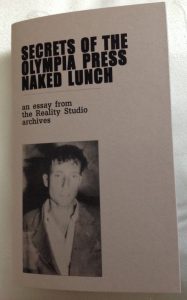 OUT NOW from THE Beat Scene Press
OUT NOW from THE Beat Scene Press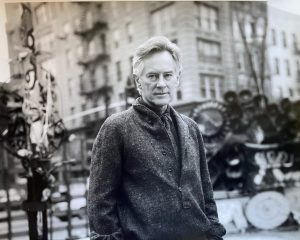
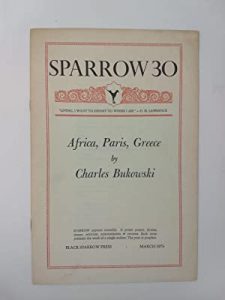 Preparing something for a future Beat Scene issue – this 1975 Black Sparrow Press booklet (see above) was rediscovered on my Bukowski shelves. Had forgotten all about it. John Martin periodically issued this series – monthly if I recall – Michael McClure, Charles Reznikoff, Gilbert Sorrentino, Joyce Carol Oates, John Ashbery were amongst others who were published. John Martin published many wonderful books in limited numbers over the years – financed in all likelihood by the relatively massive sales of Charles Bukowski. He was a big ‘Modernist’ fan and poetry publisher – it is well documented how he sold his collection to fund the beginnings of his Black Sparrow Press. This particular issue AFRICA, PARIS, GREECE, includes eight Charles Bukowski poems. It was published in 1975. My thinking was that it must be quite expensive – 46 years after issue, but it is not especially. Copies can be had on the internet for around $20. Though virtually all those copies are in the hands of dastardly American booksellers, so you’ll end up forking out that again at least in overseas post. Despite it being a lightweight item. In 1975 Bukowski remained something of a cult writer, big in the small press world, people like Marvin Malone at Wormwood magazine lauding his work. – https://wormwoodreview.com/malone_bio.html – Bukowski hadn’t yet moved to San Pedro (where he famously put Redondo Beach on the map of course!) and was still haunting some of the less salubrious areas off Hollywood Boulevard and similar. One poem here stood out for me a little, not that the others disappoint, they are fine – but SUCCESS
Preparing something for a future Beat Scene issue – this 1975 Black Sparrow Press booklet (see above) was rediscovered on my Bukowski shelves. Had forgotten all about it. John Martin periodically issued this series – monthly if I recall – Michael McClure, Charles Reznikoff, Gilbert Sorrentino, Joyce Carol Oates, John Ashbery were amongst others who were published. John Martin published many wonderful books in limited numbers over the years – financed in all likelihood by the relatively massive sales of Charles Bukowski. He was a big ‘Modernist’ fan and poetry publisher – it is well documented how he sold his collection to fund the beginnings of his Black Sparrow Press. This particular issue AFRICA, PARIS, GREECE, includes eight Charles Bukowski poems. It was published in 1975. My thinking was that it must be quite expensive – 46 years after issue, but it is not especially. Copies can be had on the internet for around $20. Though virtually all those copies are in the hands of dastardly American booksellers, so you’ll end up forking out that again at least in overseas post. Despite it being a lightweight item. In 1975 Bukowski remained something of a cult writer, big in the small press world, people like Marvin Malone at Wormwood magazine lauding his work. – https://wormwoodreview.com/malone_bio.html – Bukowski hadn’t yet moved to San Pedro (where he famously put Redondo Beach on the map of course!) and was still haunting some of the less salubrious areas off Hollywood Boulevard and similar. One poem here stood out for me a little, not that the others disappoint, they are fine – but SUCCESS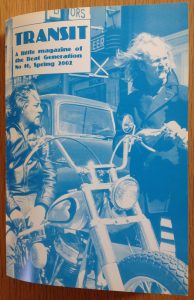 Alongside Beat Scene in earlier years there were twenty five issues of a pocket poetry (mostly) magazine called TRANSIT. It has been in hibernation for a good number of years now. I’ve been mulling over whether or not to issue it again. There’s bags of material that could go in. It is simply a matter of finding the time. Here’s a sample copy – featuring Gary Snyder, he’s a writer who never fails to interest. He’s never going to get better than things like AXE HANDLES and THE BACK COUNTRY and that period, yet he endures, he seems as much an essayist as a poet too nowadays. This TRANSIT, number 15, from 2005 is, I think, not a bad lineup. Poems from David Meltzer, Anne Waldman, Diane di Prima, Barry Gifford, Charles Plymell, Tom Clark, Neeli Cherkovski, Dan Fante, Robert Creeley. There’s an essay on Gary Snyder by Trevor Carolan, another on Jack Kerouac by Patrick Fenton, Jim Burns, Arthur Winfield Knight. Not so shabby at all. Another earlier number, issue 10, from Spring 2002 (heck is it really almost 20 years) – Richard Brautigan and Michael McClure cover – Charles Plymell and a little essay about sharing a house with Neal Cassady. Poetry from Anne Waldman, A.D. Winans, Michael McClure, Charles Bukowski (two from him), Billy Childish. Jack Kerouac and Jazz – an essay by Ashley Shelby. Two essays from John Thomas on Bukowski and Brautigan – he knew them both. Plus Aram Saroyan writing about his friend the poet Fielding Dawson. And there are photos in this issue. It seemed right to keep poetry to a little magazine and leave Beat Scene to do other things. Perhaps the Beat Scene chapbook series took over in my mind? Still it was fun while it lasted. Yet who knows what tomorrow brings.
Alongside Beat Scene in earlier years there were twenty five issues of a pocket poetry (mostly) magazine called TRANSIT. It has been in hibernation for a good number of years now. I’ve been mulling over whether or not to issue it again. There’s bags of material that could go in. It is simply a matter of finding the time. Here’s a sample copy – featuring Gary Snyder, he’s a writer who never fails to interest. He’s never going to get better than things like AXE HANDLES and THE BACK COUNTRY and that period, yet he endures, he seems as much an essayist as a poet too nowadays. This TRANSIT, number 15, from 2005 is, I think, not a bad lineup. Poems from David Meltzer, Anne Waldman, Diane di Prima, Barry Gifford, Charles Plymell, Tom Clark, Neeli Cherkovski, Dan Fante, Robert Creeley. There’s an essay on Gary Snyder by Trevor Carolan, another on Jack Kerouac by Patrick Fenton, Jim Burns, Arthur Winfield Knight. Not so shabby at all. Another earlier number, issue 10, from Spring 2002 (heck is it really almost 20 years) – Richard Brautigan and Michael McClure cover – Charles Plymell and a little essay about sharing a house with Neal Cassady. Poetry from Anne Waldman, A.D. Winans, Michael McClure, Charles Bukowski (two from him), Billy Childish. Jack Kerouac and Jazz – an essay by Ashley Shelby. Two essays from John Thomas on Bukowski and Brautigan – he knew them both. Plus Aram Saroyan writing about his friend the poet Fielding Dawson. And there are photos in this issue. It seemed right to keep poetry to a little magazine and leave Beat Scene to do other things. Perhaps the Beat Scene chapbook series took over in my mind? Still it was fun while it lasted. Yet who knows what tomorrow brings.
————————————————————————
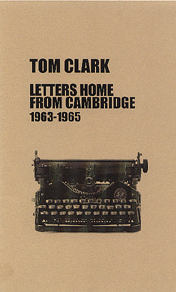 A very early Beat Scene Press chapbook. JACK KEROUAC in SAN FRANCISCO by the late poet and biographer Tom Clark who died when hit by a vehicle a couple of years back, near his home in Berkeley. Tom was very supportive of Beat Scene and helped a lot, especially with issue No 51 which gave a lot of space over to the Bolinas poetry scene way back. Tom and his wife Angelica were a key part of that poetry community. Tom also wrote biographies of Ed Dorn, Charles Olson and Jack Kerouac – besides a string of poetry collections. Another Beat Scene chapbook from Tom was his LETTERS FROM CAMBRIDGE – relating to his time as a young student at university in England. His book WHO IS SYLVIA? is a window into that time. Through our correspondence over the years it became clear that not only was Tom highly informed on American baseball but also English (and world) football. He’d mention watching games in the wee small hours on TV. So we had much common ground there. Larry Bensky was a friend and colleague of Tom for many years. This little recalling sums up a lot and is not a million miles from my own long distance memories of him. https://www.theparisreview.org/blog/2018/08/20/tom-clark-1941-2018/ Tom was an important American poet. Here’s a link to the New York Times – an obituary where they fill in some of the gaps in his full life. https://www.nytimes.com/2018/08/24/obituaries/tom-clark-77-is-dead-poet-biographer-baseball-bard.html
A very early Beat Scene Press chapbook. JACK KEROUAC in SAN FRANCISCO by the late poet and biographer Tom Clark who died when hit by a vehicle a couple of years back, near his home in Berkeley. Tom was very supportive of Beat Scene and helped a lot, especially with issue No 51 which gave a lot of space over to the Bolinas poetry scene way back. Tom and his wife Angelica were a key part of that poetry community. Tom also wrote biographies of Ed Dorn, Charles Olson and Jack Kerouac – besides a string of poetry collections. Another Beat Scene chapbook from Tom was his LETTERS FROM CAMBRIDGE – relating to his time as a young student at university in England. His book WHO IS SYLVIA? is a window into that time. Through our correspondence over the years it became clear that not only was Tom highly informed on American baseball but also English (and world) football. He’d mention watching games in the wee small hours on TV. So we had much common ground there. Larry Bensky was a friend and colleague of Tom for many years. This little recalling sums up a lot and is not a million miles from my own long distance memories of him. https://www.theparisreview.org/blog/2018/08/20/tom-clark-1941-2018/ Tom was an important American poet. Here’s a link to the New York Times – an obituary where they fill in some of the gaps in his full life. https://www.nytimes.com/2018/08/24/obituaries/tom-clark-77-is-dead-poet-biographer-baseball-bard.html
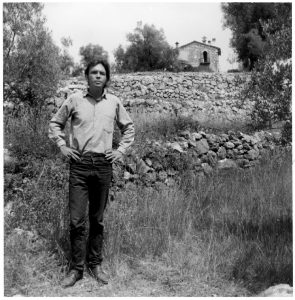
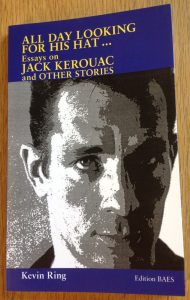 Quite taken aback at how the years have flown by since Elias Schneitter at Edition Baes in Austria published my paperback book of essays and interviews – ALL DAY LOOKING FOR HIS HAT: ESSAYS ON JACK KEROUAC and Other Stories – Joyce Johnson is one interviewee. Published in Austria in English, Elias did a neat job of putting it together. Edition Baes have published books by Jack Hirschman and Ruth Weiss amongst others. Their site is at https://www.edition-baes.com/
Quite taken aback at how the years have flown by since Elias Schneitter at Edition Baes in Austria published my paperback book of essays and interviews – ALL DAY LOOKING FOR HIS HAT: ESSAYS ON JACK KEROUAC and Other Stories – Joyce Johnson is one interviewee. Published in Austria in English, Elias did a neat job of putting it together. Edition Baes have published books by Jack Hirschman and Ruth Weiss amongst others. Their site is at https://www.edition-baes.com/
——————————————————————–
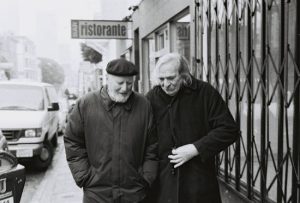 Poet JACK HIRSCHMAN died suddenly today in San Francisco, Sunday August 22. Jack was born in New York in 1933. He was 87 years old. You’ll surely read most about his life in various places over the coming days, so I’ll keep it personal here for now. I had a lovely afternoon with Jack and Kerouac biographer Gerald Nicosia in Vesuvio’s in San Francisco’s North Beach in 1981. Without looking at my diary I recall I’d arranged to meet Gerald there and he brought Jack along. Jack lived in North Beach I recall. He seemed to enjoy living in the area. It was fascinating listening to the other two that afternoon. It was easy to just listen to their tales. In my innocent mind back then Jack was a ‘Socialist’ poet. I liked him because of that. To him poetry was wonderful but it had to make a difference. He was committed to his causes. A better world for all. I knew nothing of his translation work, his overseas connections. That he had spent time in Yorkshire. For me that emerged whilst interviewing him for Beat Scene later on. I’ll have to dig out the diary and rediscover what I wrote. There was intermittent correspondence with Jack over the years. He handwrote his letters, no typewriter or computer for him. He graciously allowed me to publish a decent sized chapbook of his poems. In 2002 I met Jack again one rainy afternoon in December – just before Christmas – in Black Oak Books in North Beach, a used bookstore sadly no longer there. We were both silently browsing. Spotting this familiar figure with that magnificent moustache I did what I normally shy away from and approached and asked if he were Jack Hirschman. And to my surprise he remembered me. Or maybe he was just being nice. We talked for a while and then braving the rain – as they say in Newcastle – it was ‘stotting it down’ – we walked across the road to City Lights bookstore. Jack picked one of his books off the shelves and asked the person behind the desk to put it on his bill. Jack signed it for me. We walked along to Puccini’s cafe where we met up with my wife and Jack phoned his partner Aggie (Agnetha Falk – that’s Aggie with Jack above) and suggested we go over to the Cafe Trieste. Think he felt more at home there. While walking we passed the big Catholic church and we were talking about fellow San Francisco poet Philip Lamantia. Jack said that Philip would probably be in the church as it was Sunday. It was a very wet but lovely afternoon in North Beach. A kindly man. He seemed to me larger than life. He was certainly a pivotal North Beach poet. I got to learn more about his long life in poetry, his travels, his translation work. He wasn’t interested in fame or wealth, I understand he lived in a tiny flat in North Beach. My memory tells me there is a documentary about him on Youtube and Jack is seen at home. I’ve still got the paper napkin he doodled on in a cafe – tucked away inside the book he signed for me. Naturally the SAN FRANCISCO CHRONICLE had some words about Jack. Go here – https://www.sfchronicle.com/bayarea/article/Jack-Hirschman-Marxist-poet-and-North-Beach-16404434.php?fbclid=IwAR2HgL0P5iT-fSAdez44yOGwLyU1-PZB_PiwC3G6j3O6zFfY1XpHM81eq78
Poet JACK HIRSCHMAN died suddenly today in San Francisco, Sunday August 22. Jack was born in New York in 1933. He was 87 years old. You’ll surely read most about his life in various places over the coming days, so I’ll keep it personal here for now. I had a lovely afternoon with Jack and Kerouac biographer Gerald Nicosia in Vesuvio’s in San Francisco’s North Beach in 1981. Without looking at my diary I recall I’d arranged to meet Gerald there and he brought Jack along. Jack lived in North Beach I recall. He seemed to enjoy living in the area. It was fascinating listening to the other two that afternoon. It was easy to just listen to their tales. In my innocent mind back then Jack was a ‘Socialist’ poet. I liked him because of that. To him poetry was wonderful but it had to make a difference. He was committed to his causes. A better world for all. I knew nothing of his translation work, his overseas connections. That he had spent time in Yorkshire. For me that emerged whilst interviewing him for Beat Scene later on. I’ll have to dig out the diary and rediscover what I wrote. There was intermittent correspondence with Jack over the years. He handwrote his letters, no typewriter or computer for him. He graciously allowed me to publish a decent sized chapbook of his poems. In 2002 I met Jack again one rainy afternoon in December – just before Christmas – in Black Oak Books in North Beach, a used bookstore sadly no longer there. We were both silently browsing. Spotting this familiar figure with that magnificent moustache I did what I normally shy away from and approached and asked if he were Jack Hirschman. And to my surprise he remembered me. Or maybe he was just being nice. We talked for a while and then braving the rain – as they say in Newcastle – it was ‘stotting it down’ – we walked across the road to City Lights bookstore. Jack picked one of his books off the shelves and asked the person behind the desk to put it on his bill. Jack signed it for me. We walked along to Puccini’s cafe where we met up with my wife and Jack phoned his partner Aggie (Agnetha Falk – that’s Aggie with Jack above) and suggested we go over to the Cafe Trieste. Think he felt more at home there. While walking we passed the big Catholic church and we were talking about fellow San Francisco poet Philip Lamantia. Jack said that Philip would probably be in the church as it was Sunday. It was a very wet but lovely afternoon in North Beach. A kindly man. He seemed to me larger than life. He was certainly a pivotal North Beach poet. I got to learn more about his long life in poetry, his travels, his translation work. He wasn’t interested in fame or wealth, I understand he lived in a tiny flat in North Beach. My memory tells me there is a documentary about him on Youtube and Jack is seen at home. I’ve still got the paper napkin he doodled on in a cafe – tucked away inside the book he signed for me. Naturally the SAN FRANCISCO CHRONICLE had some words about Jack. Go here – https://www.sfchronicle.com/bayarea/article/Jack-Hirschman-Marxist-poet-and-North-Beach-16404434.php?fbclid=IwAR2HgL0P5iT-fSAdez44yOGwLyU1-PZB_PiwC3G6j3O6zFfY1XpHM81eq78
More later.
——————————————————————–
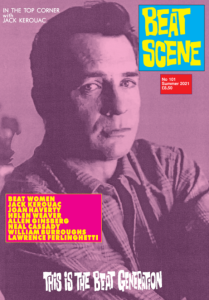
BEAT SCENE number 101 is now available. The mailout was completed a few weeks ago. Eased along with Classic FM radio. It is an eclectic mix as usual, Jack Kerouac of course, Allen Ginsberg, Lawrence Ferlinghetti, Joan Haverty, Helen Weaver, Diane di Prima, Beat Women (like Elise Cowen – pictured above) and more. And how encouraging it is to see a little mention of this forthcoming issue on The Allen Ginsberg Project site. Thank you Peter Hale and co. There are only a few copies left. If you would like to order a copy contact me at kevbeatscene@gmail.com
—————————————————————–
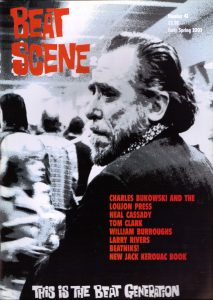 On March 18, 2003 the first entry in a huge red ledger book given to me by a friend was made. That first entry was for Beat Scene magazine number 42. (copies still available), The book records every single issue of Beat Scene sold since that date. All entries by handwriting. A Mr. John Aris was the recipient. As well as being very much a physical entity, as opposed to a virtual bit of vapour, all Beat Scene records are decidedly Dickensian. Index cards, books, letters. John Aris used to visit here to sometimes collect his subscription copies. Not seen John in years. That issue’s ledger entry tells me that copies were sent to Kerouac and Cassady’s good On the Road friend Al Hinkle, to Jon Edgar Webb Jr, to Albert Saijo, Carl Weissner, Tom Clark, Dan Fante amongst other writers and contributors. This ledger tells me many stories. At a glance I can see which issues do better than others. This particular first entry – Charles Bukowski at the racetrack on the cover – did very well in sales terms, as did number 43, a Richard Brautigan cover. That issue long ago sold out and gone to that great ‘rare book dealer heaven in the ether.’ The list of names is like a roll call. Some of those names are constant throughout, indeed, they’ve been constant since day one back in March 1988. I salute them. The red ledger book, battered and worn, is coming to the end of its life now, the pages almost full, it’s beginning to fall apart. It will record the sales and ups and downs of Beat Scene 101. Over 60 issues, including Specials, are documented in these pages, over 18 years of entries. Then it will be consigned to a plastic tub with other ephemera in the Beat Scene office. Where can I find another huge ledger type book to record the next 18 years I wonder?
On March 18, 2003 the first entry in a huge red ledger book given to me by a friend was made. That first entry was for Beat Scene magazine number 42. (copies still available), The book records every single issue of Beat Scene sold since that date. All entries by handwriting. A Mr. John Aris was the recipient. As well as being very much a physical entity, as opposed to a virtual bit of vapour, all Beat Scene records are decidedly Dickensian. Index cards, books, letters. John Aris used to visit here to sometimes collect his subscription copies. Not seen John in years. That issue’s ledger entry tells me that copies were sent to Kerouac and Cassady’s good On the Road friend Al Hinkle, to Jon Edgar Webb Jr, to Albert Saijo, Carl Weissner, Tom Clark, Dan Fante amongst other writers and contributors. This ledger tells me many stories. At a glance I can see which issues do better than others. This particular first entry – Charles Bukowski at the racetrack on the cover – did very well in sales terms, as did number 43, a Richard Brautigan cover. That issue long ago sold out and gone to that great ‘rare book dealer heaven in the ether.’ The list of names is like a roll call. Some of those names are constant throughout, indeed, they’ve been constant since day one back in March 1988. I salute them. The red ledger book, battered and worn, is coming to the end of its life now, the pages almost full, it’s beginning to fall apart. It will record the sales and ups and downs of Beat Scene 101. Over 60 issues, including Specials, are documented in these pages, over 18 years of entries. Then it will be consigned to a plastic tub with other ephemera in the Beat Scene office. Where can I find another huge ledger type book to record the next 18 years I wonder?
—————————————————————
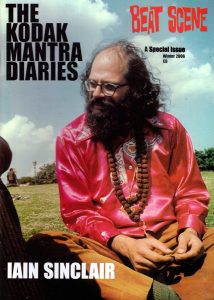 Because of the recent GOLD MACHINE BEATS chapbook by Iain Sinclair there have been requests for other Sinclair things that have been issued from here. One thing which was done 15 years ago – hard for me to comprehend that – was THE KODAK MANTRA DIARIES by Iain. It was a revamping of one of his very early Albion Press publications, from a time when he was still relatively unknown outside his own circle I’m guessing. But the original THE KODAK MANTRA DIARIES (see image below) had taken on – mythical is too strong a word – special aura maybe – that it was a little daunting at first for me to take on. The book was a unique take on significant times in London, when values were shifting, pressure was growing for cultural, social change. To me it’s a true picture of how things were for many in mid to late 1960s in London, a capturing of a spirit. The sooty Post War streets of the capital. Filming Allen Ginsberg, trailing him, with William Burroughs, Charles Olson in those shadows too, Stokeley Carmichael at the Dialectics of Liberation conference at Camden Town’s Roundhouse. Intense debate for days in those summer days of the mid 1960s. The film that was produced alongside the book by Iain and his pals, Ah, Sunflower. Never has a name so aptly conjured up the times. Allen Ginsberg in colour, in London. A time where he became so much more than a poet. Adding ‘political commentator’ – maybe a spokesman for his generation. And the film was so close to failing, there’s a story there. It was a very satisfying project for me. A learning curve. Good to see extra photos added, additions to the text. California poet and biographer Tom Clark contributing. More words from Iain. And the cover of it. Ginsberg, resplendent in a bright red shirt Paul McCartney had given him.
Because of the recent GOLD MACHINE BEATS chapbook by Iain Sinclair there have been requests for other Sinclair things that have been issued from here. One thing which was done 15 years ago – hard for me to comprehend that – was THE KODAK MANTRA DIARIES by Iain. It was a revamping of one of his very early Albion Press publications, from a time when he was still relatively unknown outside his own circle I’m guessing. But the original THE KODAK MANTRA DIARIES (see image below) had taken on – mythical is too strong a word – special aura maybe – that it was a little daunting at first for me to take on. The book was a unique take on significant times in London, when values were shifting, pressure was growing for cultural, social change. To me it’s a true picture of how things were for many in mid to late 1960s in London, a capturing of a spirit. The sooty Post War streets of the capital. Filming Allen Ginsberg, trailing him, with William Burroughs, Charles Olson in those shadows too, Stokeley Carmichael at the Dialectics of Liberation conference at Camden Town’s Roundhouse. Intense debate for days in those summer days of the mid 1960s. The film that was produced alongside the book by Iain and his pals, Ah, Sunflower. Never has a name so aptly conjured up the times. Allen Ginsberg in colour, in London. A time where he became so much more than a poet. Adding ‘political commentator’ – maybe a spokesman for his generation. And the film was so close to failing, there’s a story there. It was a very satisfying project for me. A learning curve. Good to see extra photos added, additions to the text. California poet and biographer Tom Clark contributing. More words from Iain. And the cover of it. Ginsberg, resplendent in a bright red shirt Paul McCartney had given him.
————————————————————————-
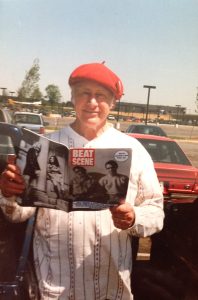 This is Ken Kesey reading Beat Scene number 18 in a car park in West Virginia. It would be 1992. Ken was being interviewed by Alan Balliett, especially for Beat Scene. It was a lengthy and full interview. There were lots of pictures taken. Ken was into coloured marker pens at the time. He was quite talented with them, anyone who has seen his JAIL JOURNAL book (a splendid thing) will nod their heads at this. Raw, untutored maybe but with an innocent craft. He’s holding up the issue of the magazine that I dislike the most. To save money I’d taken it to a different printer and they really fouled it up. Never again. You can see Jack and Neal on the cover and Richard Brautigan on the rear cover. Alan’s interview was so good I did a Beat Scene chapbook edition of it, including material cut from the Beat Scene version. Ken featured on the Beat Scene 16 cover and, if my memory serves me well, there was a broadside from him slipped inside the magazine for subscribers. Alan told me he was lovely to interview and everything I’ve read about him bears that out. He was in awe of Jack Kerouac and it’s such a shame that when they got to meet in NYC towards the end of Kerouac’s life it was amidst all the lights, cables, cameras and mayhem of the Pranksters, Kerouac was put off by all that. If only Ken and Jack (and maybe Neal and Ken Babbs) had been able to talk in quiet surroundings. Kerouac would have heard Ken tell him how he really rated him as a writer. Which, as we all know, was all Jack wanted to hear. Not the King of the Beats hoopla. And it reminded me of putting some petrol in the car in Oregon one time, a remote town, it seemed to me, and I swear Ken Kesey pulled up close by and filled his tank up too. I tried not to stare. I’m 99% certain it was him. I didn’t speak, too frozen and unsure, it wasn’t that far from Eugene. I just kept thinking ‘One Flew Over the Cuckoo’s Nest.’ His espousal of drugs always troubled me. Sure he wanted people to see the world from a heightened perspective but drugs, to me at least, are never the answer. To paraphrase Allen Ginsberg ‘I’ve seen some of the best friends I’ve had destroyed and nearly destroyed – not by madness, but by drugs and drink -it’s a madness all of its own.’ Thankfully, I think, Ken drew back from it in later years – as an ex wrestler athlete he knew it made sense.
This is Ken Kesey reading Beat Scene number 18 in a car park in West Virginia. It would be 1992. Ken was being interviewed by Alan Balliett, especially for Beat Scene. It was a lengthy and full interview. There were lots of pictures taken. Ken was into coloured marker pens at the time. He was quite talented with them, anyone who has seen his JAIL JOURNAL book (a splendid thing) will nod their heads at this. Raw, untutored maybe but with an innocent craft. He’s holding up the issue of the magazine that I dislike the most. To save money I’d taken it to a different printer and they really fouled it up. Never again. You can see Jack and Neal on the cover and Richard Brautigan on the rear cover. Alan’s interview was so good I did a Beat Scene chapbook edition of it, including material cut from the Beat Scene version. Ken featured on the Beat Scene 16 cover and, if my memory serves me well, there was a broadside from him slipped inside the magazine for subscribers. Alan told me he was lovely to interview and everything I’ve read about him bears that out. He was in awe of Jack Kerouac and it’s such a shame that when they got to meet in NYC towards the end of Kerouac’s life it was amidst all the lights, cables, cameras and mayhem of the Pranksters, Kerouac was put off by all that. If only Ken and Jack (and maybe Neal and Ken Babbs) had been able to talk in quiet surroundings. Kerouac would have heard Ken tell him how he really rated him as a writer. Which, as we all know, was all Jack wanted to hear. Not the King of the Beats hoopla. And it reminded me of putting some petrol in the car in Oregon one time, a remote town, it seemed to me, and I swear Ken Kesey pulled up close by and filled his tank up too. I tried not to stare. I’m 99% certain it was him. I didn’t speak, too frozen and unsure, it wasn’t that far from Eugene. I just kept thinking ‘One Flew Over the Cuckoo’s Nest.’ His espousal of drugs always troubled me. Sure he wanted people to see the world from a heightened perspective but drugs, to me at least, are never the answer. To paraphrase Allen Ginsberg ‘I’ve seen some of the best friends I’ve had destroyed and nearly destroyed – not by madness, but by drugs and drink -it’s a madness all of its own.’ Thankfully, I think, Ken drew back from it in later years – as an ex wrestler athlete he knew it made sense.
———————————————————————————————-
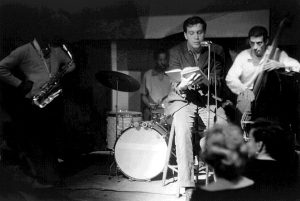 From time to time an individual crosses your path like no other. Robert Briggs was one such figure. Roughly 20 years ago he came to visit. He travelled alone. A tall, lean man, who often thought for a while before speaking. This is so rare. I was reminded of him being here when looking at a site about bygone years in San Francisco, The Place, Vesuvios, The Co-Existence Bagel Shop and other sites of literary and jazz significance, in the course of research. And there he was, Mr. Briggs at The Cellar, backed by a band. Reading his poetry. It is 1958. – [That’s Robert above] – He released records. He had a handful of books published. One of those was RUINED TIME: HOMAGE TO THE BEAT GENERATION. It appeared in the early years of this new century. Don’t be fooled by the homage subtitle. Robert was not one for gushing hero worship, instead you’ll find a curious and big book ruminating on the Beats and America. Philosophical, psycho-analytical, sociological and literary. Robert knew what he was talking about. He’d been a literary agent way back. I never knew while he was here how he’d been friends with people like Richard Brautigan and acted on his behalf, securing book deals. He’d been a soldier who, along with his platoon, was asked to be in a trench to witness an atomic explosion, he says they were instructed to ‘cover their holes’ eyes, nose, mouth, ears, as best they could. It was the late 1940s. He told me about those soldiers who died young because of this. Pawns in their game, indeed. Robert was modest. You may never have heard of him. Here’s a few lines from the opening of his book — “I drifted back into the Fifties when I was in New York one sunny Sunday in 1990. It was a mild afternoon. Wandering down into Greenwich Village, I turned off 8th Street and walked south along MacDougal. As I neared Minetta’s Tavern, I happened to peer into the window of Cafe Reggio. In there, pensive people were sitting, reading, and talking over empty expresso cups at the same ornate marble-topped tables where forty years earlier, I’d begun to measure out my life with coffee spoons.”
From time to time an individual crosses your path like no other. Robert Briggs was one such figure. Roughly 20 years ago he came to visit. He travelled alone. A tall, lean man, who often thought for a while before speaking. This is so rare. I was reminded of him being here when looking at a site about bygone years in San Francisco, The Place, Vesuvios, The Co-Existence Bagel Shop and other sites of literary and jazz significance, in the course of research. And there he was, Mr. Briggs at The Cellar, backed by a band. Reading his poetry. It is 1958. – [That’s Robert above] – He released records. He had a handful of books published. One of those was RUINED TIME: HOMAGE TO THE BEAT GENERATION. It appeared in the early years of this new century. Don’t be fooled by the homage subtitle. Robert was not one for gushing hero worship, instead you’ll find a curious and big book ruminating on the Beats and America. Philosophical, psycho-analytical, sociological and literary. Robert knew what he was talking about. He’d been a literary agent way back. I never knew while he was here how he’d been friends with people like Richard Brautigan and acted on his behalf, securing book deals. He’d been a soldier who, along with his platoon, was asked to be in a trench to witness an atomic explosion, he says they were instructed to ‘cover their holes’ eyes, nose, mouth, ears, as best they could. It was the late 1940s. He told me about those soldiers who died young because of this. Pawns in their game, indeed. Robert was modest. You may never have heard of him. Here’s a few lines from the opening of his book — “I drifted back into the Fifties when I was in New York one sunny Sunday in 1990. It was a mild afternoon. Wandering down into Greenwich Village, I turned off 8th Street and walked south along MacDougal. As I neared Minetta’s Tavern, I happened to peer into the window of Cafe Reggio. In there, pensive people were sitting, reading, and talking over empty expresso cups at the same ornate marble-topped tables where forty years earlier, I’d begun to measure out my life with coffee spoons.”
He’s pictured in The Cellar, a jazz place where Lawrence Ferlinghetti, Kenneth Rexroth, ruth weiss and others read with jazz, they make it into the history books but Robert Briggs gets airbrushed away. Perhaps because he was both part of it and yet had that ability to step outside. Never part of a literary gang, resolutely individual, a man for all seasons possibly. If you want to discover America close up, at least that part that Robert occupied, read his book if you can find it.
I want to jot down a few lines here and will add to this – but wanted to type it in before his memory slips away.
———————————————————————
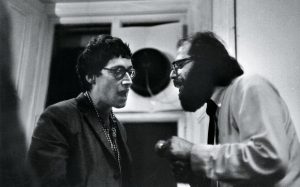 The English poet Michael Horovitz has just died. He was 86. He was the publisher of New Departures and the editor of the collection of British poets CHILDREN OF ALBION in 1969. Many have likened this volume to THE NEW AMERICAN POETRY edited by Don Allen in 1960. Michael was also part of the British contingent of poets at the 1965 gathering at the Albert Hall in London in 1965, (see photo on left above) – when they were joined by Gregory Corso, Lawrence Ferlinghetti and Allen Ginsberg and where Michael could be seen in Peter Whitehead’s film of the event, WHOLLY COMMUNION. Allen Ginsberg (see him above with Michael) described him as “Popular, experienced, experimental, New Jerusalem, Jazz Generation, Sensitive Bard”. At home equally with musicians, he read alongside Graham Coxon and Damon Albarn from Blur. My own personal recollections of him range from sitting next to him in a basement cafe near The London Review bookshop where Michael McClure had just read and Michael, noticing that my wife was not a fan of noodles, saw her plate and politely asked if he could finish them off. And he did. He did look as though he needed feeding. He was lovely and warm to talk to. We had spoken a few times on the phone and exchanged letters on and off over the years. Another memory is of talking with him after a press screening for the Walter Salles film of On the Road in a cinema in Leicester Square. Again he was charming and friendly and happy to talk at length. His publications were often wide ranging, where Beat poets would find themselves along European poets, non poets, up and coming kids. He was open to everything it seems. A lively and enduring figure on the British poetry scene for 65 years.
The English poet Michael Horovitz has just died. He was 86. He was the publisher of New Departures and the editor of the collection of British poets CHILDREN OF ALBION in 1969. Many have likened this volume to THE NEW AMERICAN POETRY edited by Don Allen in 1960. Michael was also part of the British contingent of poets at the 1965 gathering at the Albert Hall in London in 1965, (see photo on left above) – when they were joined by Gregory Corso, Lawrence Ferlinghetti and Allen Ginsberg and where Michael could be seen in Peter Whitehead’s film of the event, WHOLLY COMMUNION. Allen Ginsberg (see him above with Michael) described him as “Popular, experienced, experimental, New Jerusalem, Jazz Generation, Sensitive Bard”. At home equally with musicians, he read alongside Graham Coxon and Damon Albarn from Blur. My own personal recollections of him range from sitting next to him in a basement cafe near The London Review bookshop where Michael McClure had just read and Michael, noticing that my wife was not a fan of noodles, saw her plate and politely asked if he could finish them off. And he did. He did look as though he needed feeding. He was lovely and warm to talk to. We had spoken a few times on the phone and exchanged letters on and off over the years. Another memory is of talking with him after a press screening for the Walter Salles film of On the Road in a cinema in Leicester Square. Again he was charming and friendly and happy to talk at length. His publications were often wide ranging, where Beat poets would find themselves along European poets, non poets, up and coming kids. He was open to everything it seems. A lively and enduring figure on the British poetry scene for 65 years.
—————————————————————————————————
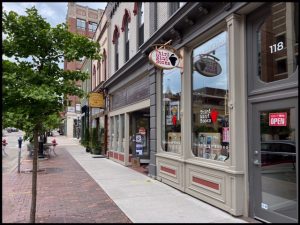 Karen and Arthur at THIRD MIND BOOKS in Ann Arbor, USA. They’ve been around for some years selling Beat Generation books and associated things. They stock my Beat Scene magazine every issue and anything else that gets published via the Beat Scene Press. They are a treasure trove for Beat fans and their dedication to describing the stuff they put up for sale is phenomenal. I’m not sure they are open to the public, though I have seen pictures in their catalogues (paper ones) that suggest they might – but their online site is…well, you could vanish for days in there. Here’s what they wrote about Beat Scene Number 100 just recently.
Karen and Arthur at THIRD MIND BOOKS in Ann Arbor, USA. They’ve been around for some years selling Beat Generation books and associated things. They stock my Beat Scene magazine every issue and anything else that gets published via the Beat Scene Press. They are a treasure trove for Beat fans and their dedication to describing the stuff they put up for sale is phenomenal. I’m not sure they are open to the public, though I have seen pictures in their catalogues (paper ones) that suggest they might – but their online site is…well, you could vanish for days in there. Here’s what they wrote about Beat Scene Number 100 just recently.
Beat Scene No. 100 (Spring 2021)
Coventry, England: The Beat Scene Press, 2021. First Printing. Wrappers. This latest (as of this writing) & most historic ONE HUNDREDTH issue of the magazine-format literary journal edited & published by Kevin Ring in the UK features an essay about & mid-1990s interview with Lawrence Ferlinghetti, written & conducted by Kurt Hemmer, our good friend & esteemed colleague at the European Beat Studies Network (ebsn.eu), illustrated with photographs. There is also a vintage 1960 image of Ferlinghetti gracing front cover, in tribute to the iconic figure of the Beat Generation, San Francisco Renaissance & beyond who recently (only temporally) passed away at the age of 101. Also in this spectacular issue: A fascinating article by the great Ann Charters on the pulp mystery The Dead Beat (1960), written by Robert Bloch on the heels of his novel Psycho (1959, the basis of the ultra-classic Hitchcock film), & exemplary of the hostility toward the Beats expressed by conventional “square” society when they were freshly famous; a review by Sophia Nitrate (we just love that name) of a new book by Chris Kelso that focuses & brings important new details & insight on William S. Burroughs’ visit to Scotland in 1962 to participate in the famous & much-parsed International Literary Conference at Edinburgh; an essay on the legendary actor-polymath Dennis Hopper’s never-published early 1960s poems & his connections to contemporary poets & artists by Anthony Linick; two pieces concerning a key early conference on Jack Kerouac that took place in Salem, Massachusetts during 1973 only four years after his death which jump-started his critical rehabilitation, including transcript of opening remarks by Steve Salvo, commentary by Brian Dalton, & transcript of a portion of the conference featuring Gregory Corso, Allen Ginsberg & others; a poignant tribute to the beloved & prolific writer & “All-Round Entertainer” Gerald Locklin (1941-2021), who died of the Covid virus early this year, by Jules Smith; another heartfelt tribute to Lou Webb, who with her husband Jon published the utmostly collectible Outsider series & who died near the end of 2020 at age 104, by Colin Cooper; an interview with Michael Seth Stewart, editor of a new volume of letters by Beat-&-Beyond poet John Wieners to a host of literary luminaries (uncredited but probably conducted by Ring) & yet much more. With more reviews in their dedicated section including John Shapcott’s of a new study of WSB by Gerald Alva Miller, Jr.; many vintage images throughout. A monumental anniversary issue that more than ever fulfills its front cover motto: “This is the Beat Generation.” Bravo, Kevin & Co.! In very fine condition with only a few tiny bumps & light, faint creases at edges & corners of front, back covers & spine (the latter not stapled as usual but glued); tiny bumps at corners of a few page leaves; otherwise as-new inside & out. Very Fine. [Item #4443]
Price: $30.00
To be honest nobody could ask for more. They are always very honest in their descriptions and go into fine detail. They are model booksellers. And they use the word ‘utmostly.’ Rarely see that. Thank you Karen and Arthur. Go and visit their site at https://www.thirdmindbooks.com/
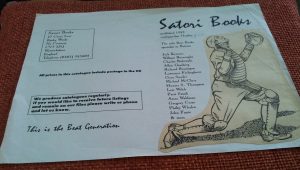 Having a look for something, for me at least, often turns up something completely different, unexpected and a find. A few Beat Scene readers of a certain age will have had some form of contact from me/with me years prior to Beat Scene in 1988. Largely through my bookselling from the mid 1970s onwards. There weren’t many people around specialising in Beat type books then. Of course Compendium Books in Camden Town in London, the Poetry bookshop in Hay on Wye did a lot on the Beats and Barry Miles at a number of London bookstores was a pioneer. As was Iain Sinclair, though Iain’s catalogues were eclectic to say the least. They were all good sources in the days before ABE, the internet and Amazon existed. When paper catalogues were the order of the day. My aim with Satori Books was to focus very narrowly on the Beats and associated figures. New books and old. Regular trips to Compendium, the Airlift Book Company, Hay on Wye and a few vital used bookstores filled my days inbetween teaching. Looking back I wonder where my energy came from. Two people in the USA helped me enormously, firstly Rick (Richard) Peabody in Washington DC. Some of you poetry readers may know Rick from the excellent GARGOYLE magazine he published for years. It was quality. Big thick paperbacks. He had interviews with Allen Ginsberg and Charles Bukowski over the years. Rick became my main source in America for used (and new sometimes) Beat type books. Boxes of titles by Kerouac, Burroughs, Bukowski, Brautigan, di Prima, you name them, Rick sent them. The books he sent helped fill the pages of the paper catalogues I sent out for years. It was my pleasure to meet Rick in Washington for a brief stay more than once back then. There’s a story I recall about my lost bag at the airport and the politician Avril Harriman. But maybe another time. When Rick moved on to other things he suggested a ready made replacement, his friend Derrick Hsu. Derrick ran a bookstore in Washington DC and he continued on with weekly shipments of Beat type books. It was always exciting to discover what was in those boxes. Derrick had a free rein to send anything he thought would be of interest. Happily this connection ran for years. And then the internet and all those book gremlins which so destroyed that personal contact between people. I miss that contact that I had with people like Derrick and Rick. But, to return to finding unexpected things. Amongst letters from Ken Kesey, Charles Bukowski, Diane di Prima, Tom Clark, Ruth Weiss, Carolyn Cassady, Robert Wilson, owner of the Phoenix bookstore in NYC (Robert published the Ann Charters bibliography on Jack Kerouac – and other Beat bibliographies – Gary Snyder was another) etc etc – there was the slightly frayed dummy page for a Satori Books catalogue. A neat baseball image which seemed to me back then, 1982 I think, quite appropriate which fills the front cover. You can see I’ve cut the image from somewhere and pasted it in. High tech. And the usual suspects are listed there as well. It’s obviously nearly forty years old and to be true it brought a lump to my throat casting my mind back. Those days are gone. My bookselling is sporadic nowadays and 99% digital sadly. But of all the things I found buried in dusty boxes this one scrappy piece of paper perhaps touched me the most.
Having a look for something, for me at least, often turns up something completely different, unexpected and a find. A few Beat Scene readers of a certain age will have had some form of contact from me/with me years prior to Beat Scene in 1988. Largely through my bookselling from the mid 1970s onwards. There weren’t many people around specialising in Beat type books then. Of course Compendium Books in Camden Town in London, the Poetry bookshop in Hay on Wye did a lot on the Beats and Barry Miles at a number of London bookstores was a pioneer. As was Iain Sinclair, though Iain’s catalogues were eclectic to say the least. They were all good sources in the days before ABE, the internet and Amazon existed. When paper catalogues were the order of the day. My aim with Satori Books was to focus very narrowly on the Beats and associated figures. New books and old. Regular trips to Compendium, the Airlift Book Company, Hay on Wye and a few vital used bookstores filled my days inbetween teaching. Looking back I wonder where my energy came from. Two people in the USA helped me enormously, firstly Rick (Richard) Peabody in Washington DC. Some of you poetry readers may know Rick from the excellent GARGOYLE magazine he published for years. It was quality. Big thick paperbacks. He had interviews with Allen Ginsberg and Charles Bukowski over the years. Rick became my main source in America for used (and new sometimes) Beat type books. Boxes of titles by Kerouac, Burroughs, Bukowski, Brautigan, di Prima, you name them, Rick sent them. The books he sent helped fill the pages of the paper catalogues I sent out for years. It was my pleasure to meet Rick in Washington for a brief stay more than once back then. There’s a story I recall about my lost bag at the airport and the politician Avril Harriman. But maybe another time. When Rick moved on to other things he suggested a ready made replacement, his friend Derrick Hsu. Derrick ran a bookstore in Washington DC and he continued on with weekly shipments of Beat type books. It was always exciting to discover what was in those boxes. Derrick had a free rein to send anything he thought would be of interest. Happily this connection ran for years. And then the internet and all those book gremlins which so destroyed that personal contact between people. I miss that contact that I had with people like Derrick and Rick. But, to return to finding unexpected things. Amongst letters from Ken Kesey, Charles Bukowski, Diane di Prima, Tom Clark, Ruth Weiss, Carolyn Cassady, Robert Wilson, owner of the Phoenix bookstore in NYC (Robert published the Ann Charters bibliography on Jack Kerouac – and other Beat bibliographies – Gary Snyder was another) etc etc – there was the slightly frayed dummy page for a Satori Books catalogue. A neat baseball image which seemed to me back then, 1982 I think, quite appropriate which fills the front cover. You can see I’ve cut the image from somewhere and pasted it in. High tech. And the usual suspects are listed there as well. It’s obviously nearly forty years old and to be true it brought a lump to my throat casting my mind back. Those days are gone. My bookselling is sporadic nowadays and 99% digital sadly. But of all the things I found buried in dusty boxes this one scrappy piece of paper perhaps touched me the most.
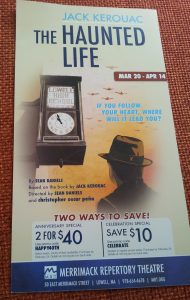 Alongside here is a poster, it measures about 12″x6″ promoting the play THE HAUNTED LIFE, based on the book by Jack Kerouac, writings from his earlier life that were deemed not quite complete back then. The play begins in Lowell in 1942. Beat Scene had a reviewer at the play at the Merrimack Theatre in Lowell a few years back (note the English spelling) – Peter Anastas, a keen reader of Kerouac who lived in Gloucester, Massachusetts. Peter’s prime interest was Charles Olson – who lived in the town also of course and Peter would meet with Olson as a younger man. Peter gave the play the thumbs up. I did wonder whether he would, he was objective about things. He filed the review and it featured in Beat Scene. I was dismayed to find out late in the day that Peter had died more than a year ago. He was of mature years, but even so seemed fit and robust. He really cared about Gloucester and wrote extensively about it over the years. To me he lived out a variation on the notion of bioregionalism, much talked about by Gary Snyder and others of course. It also struck me that the big wide world hasn’t seen the play THE HAUNTED LIFE and whether it would ever be staged elsewhere, Europe, England even? (It was performed in Philadelphia I’ve since discovered.) That would be something wouldn’t it. It further struck me that somewhere languishing in a drawer probably, is the script of the play and wouldn’t it be something to see that script properly published in book form so we can all see what they did with it. I recall the Martin Duberman play about Kerouac from the early 1970s. I have the book of it. And Arthur Knight’s play which I understand actually was performed in England, though I missed that. Though I have his little book of it. VISIONS OF KEROUAC. There is Richard Deakin’s ANGELS STILL FALLING, which has been excerpted in Beat Scene years ago and the full text in a paperback by us years ago (they’ve all gone). That sparked controversy. And more recently Tough Poets Press have published Gregory Corso plays. That’s without speaking of Michael McClure playwright. So there’s a history of plays being published. I wonder if the playwright of THE HAUNTED LIFE, Sean Daniels, is open to it being published? I’ll try and find out and have got in touch with Sean. Hope he gets back to me.
Alongside here is a poster, it measures about 12″x6″ promoting the play THE HAUNTED LIFE, based on the book by Jack Kerouac, writings from his earlier life that were deemed not quite complete back then. The play begins in Lowell in 1942. Beat Scene had a reviewer at the play at the Merrimack Theatre in Lowell a few years back (note the English spelling) – Peter Anastas, a keen reader of Kerouac who lived in Gloucester, Massachusetts. Peter’s prime interest was Charles Olson – who lived in the town also of course and Peter would meet with Olson as a younger man. Peter gave the play the thumbs up. I did wonder whether he would, he was objective about things. He filed the review and it featured in Beat Scene. I was dismayed to find out late in the day that Peter had died more than a year ago. He was of mature years, but even so seemed fit and robust. He really cared about Gloucester and wrote extensively about it over the years. To me he lived out a variation on the notion of bioregionalism, much talked about by Gary Snyder and others of course. It also struck me that the big wide world hasn’t seen the play THE HAUNTED LIFE and whether it would ever be staged elsewhere, Europe, England even? (It was performed in Philadelphia I’ve since discovered.) That would be something wouldn’t it. It further struck me that somewhere languishing in a drawer probably, is the script of the play and wouldn’t it be something to see that script properly published in book form so we can all see what they did with it. I recall the Martin Duberman play about Kerouac from the early 1970s. I have the book of it. And Arthur Knight’s play which I understand actually was performed in England, though I missed that. Though I have his little book of it. VISIONS OF KEROUAC. There is Richard Deakin’s ANGELS STILL FALLING, which has been excerpted in Beat Scene years ago and the full text in a paperback by us years ago (they’ve all gone). That sparked controversy. And more recently Tough Poets Press have published Gregory Corso plays. That’s without speaking of Michael McClure playwright. So there’s a history of plays being published. I wonder if the playwright of THE HAUNTED LIFE, Sean Daniels, is open to it being published? I’ll try and find out and have got in touch with Sean. Hope he gets back to me.
———————————————————————-
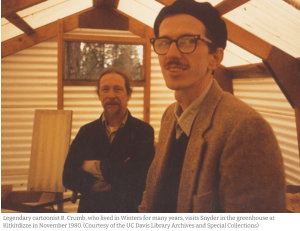 Gary Snyder has rarely been found in the pages of what you might call ‘the mainstream press.’ He’s a poet for a start. It’s a minority thing. Sure he’ll be sometimes found in Buddhist journals and independent magazines and in any number of internet type journals. However to find him in the pages of The New Yorker – a bastion of ‘straight, conservative’ America if ever there was comes as something of a surprise. I got that surprise again when ‘tidying’ up my Gary Snyder bookshelf. He sits alongside his good friends Philip Whalen and Lew Welch and close to Kenneth Rexroth and Michael McClure. I say ‘tidying up’ – there is an element of organisation – but it’s more an excuse to rediscover my books. Had forgotten this copy of The New Yorker, October 20, 2008. Priced at $4.50. In it, amongst material from John Updike, Roddy Doyle – who was enjoying a prolonged burst of success back then (he may well still be on a roll for all I know), an article about whether Joe Biden would make a good Vice President (little did they know) – John Lahr on the theatre and so on – was ZEN MASTER – GARY SNYDER’S LIFE IN POETRY by Dana Goodyear – all ten illustrated pages of it. Goodyear doesn’t write of Snyder from a distance, but meets with him at his Northern California home, a place he built himself, at a reading close by and again in New York where he reads at the Asia Society. It is an overview of his life so far, he was 78 at the time and rarely for an article based around him it takes in his associations with the Beats. He says it was ‘untidy.’ That they were/are all so very different as writers, as people. The Six Gallery reading, where Allen Ginsberg first read HOWL of course, is recalled – as is his portrayal in Jack Kerouac’s THE DHARMA BUMS. Goodyear includes some words of a letter from Kerouac to Snyder where Jack says, “Since Dharma Bums came out I feel that you’ve been silent and disappointed about me…’ Jack had similar sentiments when Neal Cassady got to read about ‘Dean Moriarty’ in ON THE ROAD. Probably the reality was a little more mundane – Snyder was smartly off to Zen studies in Japan. He was a serious student. He appreciated Jack’s skills as a novelist, he says so here in The New Yorker. Joanne Kyger, Seamus Heaney in appreciation are introduced in the article, Kenneth Rexroth, Francis Crick, Peter Coyote, Thom Gunn too. Ultimately the extended article moves into environmental, ecological concerns, something close to Gary Snyder’s heart. For a period he was actively involved in the politics (in his own fashion) relating to the harm humanity heaps on our planet. The article concludes with a reading he gives to around three hundred gathered in Parsons Lodge, designed by Arts and Crafts architects Bernard Maybeck and Mark White back in 1915. He’s hiked there from Kitkitdizze, his home not too far away. It’s a little gem of an article, interview, profile, call it what you will. Glad to have found it again after all these years. Gary Snyder in The New Yorker. Who would have believed it.
Gary Snyder has rarely been found in the pages of what you might call ‘the mainstream press.’ He’s a poet for a start. It’s a minority thing. Sure he’ll be sometimes found in Buddhist journals and independent magazines and in any number of internet type journals. However to find him in the pages of The New Yorker – a bastion of ‘straight, conservative’ America if ever there was comes as something of a surprise. I got that surprise again when ‘tidying’ up my Gary Snyder bookshelf. He sits alongside his good friends Philip Whalen and Lew Welch and close to Kenneth Rexroth and Michael McClure. I say ‘tidying up’ – there is an element of organisation – but it’s more an excuse to rediscover my books. Had forgotten this copy of The New Yorker, October 20, 2008. Priced at $4.50. In it, amongst material from John Updike, Roddy Doyle – who was enjoying a prolonged burst of success back then (he may well still be on a roll for all I know), an article about whether Joe Biden would make a good Vice President (little did they know) – John Lahr on the theatre and so on – was ZEN MASTER – GARY SNYDER’S LIFE IN POETRY by Dana Goodyear – all ten illustrated pages of it. Goodyear doesn’t write of Snyder from a distance, but meets with him at his Northern California home, a place he built himself, at a reading close by and again in New York where he reads at the Asia Society. It is an overview of his life so far, he was 78 at the time and rarely for an article based around him it takes in his associations with the Beats. He says it was ‘untidy.’ That they were/are all so very different as writers, as people. The Six Gallery reading, where Allen Ginsberg first read HOWL of course, is recalled – as is his portrayal in Jack Kerouac’s THE DHARMA BUMS. Goodyear includes some words of a letter from Kerouac to Snyder where Jack says, “Since Dharma Bums came out I feel that you’ve been silent and disappointed about me…’ Jack had similar sentiments when Neal Cassady got to read about ‘Dean Moriarty’ in ON THE ROAD. Probably the reality was a little more mundane – Snyder was smartly off to Zen studies in Japan. He was a serious student. He appreciated Jack’s skills as a novelist, he says so here in The New Yorker. Joanne Kyger, Seamus Heaney in appreciation are introduced in the article, Kenneth Rexroth, Francis Crick, Peter Coyote, Thom Gunn too. Ultimately the extended article moves into environmental, ecological concerns, something close to Gary Snyder’s heart. For a period he was actively involved in the politics (in his own fashion) relating to the harm humanity heaps on our planet. The article concludes with a reading he gives to around three hundred gathered in Parsons Lodge, designed by Arts and Crafts architects Bernard Maybeck and Mark White back in 1915. He’s hiked there from Kitkitdizze, his home not too far away. It’s a little gem of an article, interview, profile, call it what you will. Glad to have found it again after all these years. Gary Snyder in The New Yorker. Who would have believed it.
——————————————————————————————–
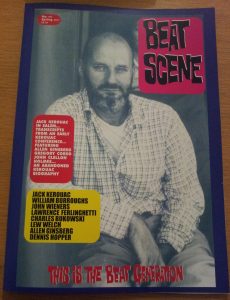
Just this minute finished wrapping up and getting ready to post the very last of the Beat Scene 100 issue off. The mailout takes about two weeks of solid work. Running back and forth to the Post Office. Thanks for your patience. This last bunch are to USA and Canada and should be there in around 7-10 days. You subscribers keep this little journal going. Whilst getting those out – some of the latest Beat Scene Press chapbooks have been going out also and here’s a little fella who has received one or two in the mail of late. Thanks to Joe Lee up in Washington State. AND cheers to Alan Robertson in Scotland who sent a card for Beat Scene reaching 100. A nice thought. Alan quotes my often spoken ‘old school’ phrase and he’s right. Beat Scene is defiantly analogue in a digitised world. The words put me in mind of a favourite song by a band that I love, well the ‘golden seven albums’ at least – The Moody Blues and a poignant tune called ‘I Never Thought I’d Ever Be a Hundred.’ Tis true. You don’t do you. And cheers for early feedback. Number 101 is well progressed and looking at early July for that one. Anyone interested in this 100th issue get in touch at kevbeatscene@gmail.co
——————————————————————————–
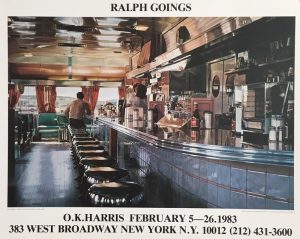
Well over 30 years ago, probably pre-internet – I managed to locate a copy of this photo realist painting by the celebrated artist Ralph Goings. I do recall writing a letter to a gallery, was it in Sweden, can’t recall, asking about the print. They sent it and to my surprise and delight enclosed another Goings print. The diner painting has hung on the wall ever since. Behind non reflective glass to see it without glare. You can probably imagine its appeal for me. Any moment Jack Kerouac will turn around and smile. The question has always been in my mind – was Goings aware of Kerouac and how he would riff, literally speaking, on the countless diners he had been in on his cross country trips across America? Consuming apple pie and ice cream as he went no doubt. Obviously Jack Kerouac was in my mind, but there’s so much more going on in this painting, it’s a microcosm of America and something quite dear to me, diners being a way of life for me in the 1970s and 1980s especially, travelling around America and Canada, California to New York and points inbetween. On Trombly and Greyhound buses and after in hired cars. A couple of times in a beautiful stately Thunderbird. Still enjoy looking at photo realist art. Guess it stemmed from appreciating the art of Edward Hopper initially and seeing a big exhibit of his work way back at the Hayward Gallery on London’s South Bank. To me, the Goings painting is quintessentially Beat.
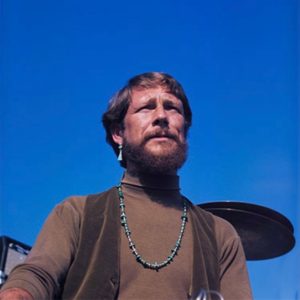 More on Gary Snyder. He’s 91 years old on May 8. To mark this The Pulitzer Prize site have returned to one of his earlier poems I Went into the Maverick Bar, a poem that shed light on America and its attitudes way back. And probably still today. Sean Murphy pens a perceptive essay about it all. The Beat Museum, that brilliant place in North Beach, San Francisco, run by Gerry Cimino, has also highlighted this Snyder birthday. Just below is the poem under discussion….
More on Gary Snyder. He’s 91 years old on May 8. To mark this The Pulitzer Prize site have returned to one of his earlier poems I Went into the Maverick Bar, a poem that shed light on America and its attitudes way back. And probably still today. Sean Murphy pens a perceptive essay about it all. The Beat Museum, that brilliant place in North Beach, San Francisco, run by Gerry Cimino, has also highlighted this Snyder birthday. Just below is the poem under discussion….
I Went into the Maverick Bar
—————————————————————————————————
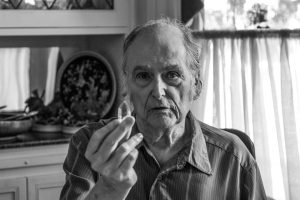
A new Beat Scene Press chapbook is OUT NOW. JACK KEROUAC AND THE SOUNDS OF OLD ANGEL MIDNIGHT a talk by Clark Coolidge. You will know Clark as the author of NOW IT’S JAZZ: KEROUAC AND THE SOUNDS. Of course Clark is a respected poet (and drummer I hear) and has seen over forty books of his published. Anyway, this is a talk from 1982. In the usual chapbook format. If you are interested in a copy contact me at kevbeatscene@gmail.com
————————————————————————————————————-
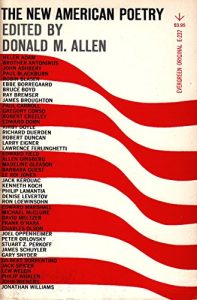 Above is the original cover for the 1960 edition of THE NEW AMERICAN POETRY 1945-1960. Edited by Don Allen and published by Barney Rossett’s Grove Press. Just look at the poets included in it. What a fabulous effort by Don Allen to compile such a roster of poets. The book is very much still in print, deservedly so. If you read the letters back and forth between Allen and Jack Kerouac and others you’ll see the process of who went in at work. Of course there are absentees that you wonder – why aren’t they in? The male/female balance is all wrong and there’s no denying that. The times and the context are all important in reflecting on that. No Diane di Prima, though she was very young. A debate for another day. Don Allen is a fascinating individual, at least he is here. Think of all the poets published through his Grey Fox Press and Four Seasons Foundations imprints — Gary Snyder, Robert Duncan, Jack Kerouac, Michael McClure, Joanne Kyger, Philip Whalen, Richard Brautigan – to name just a handful. The hope is we’ll delve into that history in Beat Scene in the near future. This is Don below.
Above is the original cover for the 1960 edition of THE NEW AMERICAN POETRY 1945-1960. Edited by Don Allen and published by Barney Rossett’s Grove Press. Just look at the poets included in it. What a fabulous effort by Don Allen to compile such a roster of poets. The book is very much still in print, deservedly so. If you read the letters back and forth between Allen and Jack Kerouac and others you’ll see the process of who went in at work. Of course there are absentees that you wonder – why aren’t they in? The male/female balance is all wrong and there’s no denying that. The times and the context are all important in reflecting on that. No Diane di Prima, though she was very young. A debate for another day. Don Allen is a fascinating individual, at least he is here. Think of all the poets published through his Grey Fox Press and Four Seasons Foundations imprints — Gary Snyder, Robert Duncan, Jack Kerouac, Michael McClure, Joanne Kyger, Philip Whalen, Richard Brautigan – to name just a handful. The hope is we’ll delve into that history in Beat Scene in the near future. This is Don below.
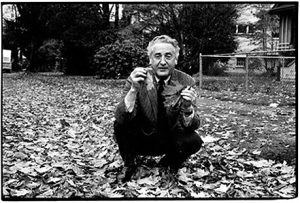
—————————————————————————————
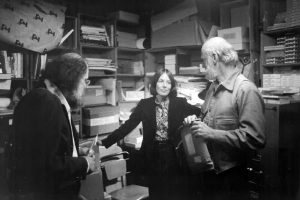 They say that behind every good man there is a good woman. Of course that can easily be reversed, lest the charge is raised of inequality etc. Behind is the wrong word here. Alongside is more appropriate. One of a number of figures that made City Lights bookstore and publishing tick along and navigate some tricky times was Nancy Peters. Nancy is in the middle here with Allen Ginsberg on her left and Lawrence Ferlinghetti on the right in this photo. Nancy was a crucial force at City Lights – not even sure she has actually retired. Here’s a print interview with Nancy, who was the partner of Philip Lamantia, conducted in recent weeks. https://citylightsbooks.tumblr.com/post/646500446014439425/nancypetersinterview?mc_cid=0504eecde7&mc_eid=fcdbf1a2e6
They say that behind every good man there is a good woman. Of course that can easily be reversed, lest the charge is raised of inequality etc. Behind is the wrong word here. Alongside is more appropriate. One of a number of figures that made City Lights bookstore and publishing tick along and navigate some tricky times was Nancy Peters. Nancy is in the middle here with Allen Ginsberg on her left and Lawrence Ferlinghetti on the right in this photo. Nancy was a crucial force at City Lights – not even sure she has actually retired. Here’s a print interview with Nancy, who was the partner of Philip Lamantia, conducted in recent weeks. https://citylightsbooks.tumblr.com/post/646500446014439425/nancypetersinterview?mc_cid=0504eecde7&mc_eid=fcdbf1a2e6
————————————————————————————–
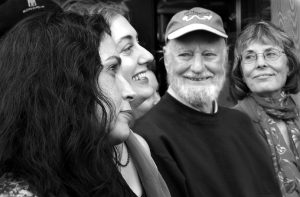
A link to Jack Foley’s long running COVER TO COVER show on radio KPFA, this week it’s all about Lawrence Ferlinghetti. LF is pictured here with staff at City Lights. Elaine Katzenberger, Nancy Peters. Go here https://drive.google.com/file/d/1VPW2923ebVmRw7Die_vTo8CmqeYcg7hY/view
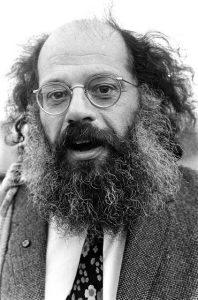
A carbon copy of Allen Ginsberg’s HOWL has been discovered, which includes previously unseen material and has gone on sale at a reserve price of $425,000. This article from today’s UK newspaper The Guardian. https://www.theguardian.com/books/2021/mar/26/howl-illuminating-draft-of-allen-ginsberg-poem-found
——————————————————————-
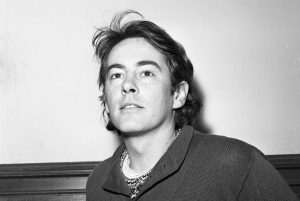
The Six Gallery reading introduced Michael McClure to the world and was a pivotal moment in his life, a turning point. He was in his early twenties. Here he is in a short clip of a film discussing that event and his participation in it and also his take on what America, in the 1950s, was really like. https://www.facebook.com/dave.moore.984349/videos/10159905616813488
And here’s Michael talking about Jack Kerouac. It’s a brief three minute clip but salient words. https://www.facebook.com/dave.moore.984349/videos/10159907255268488
—————————————————————-
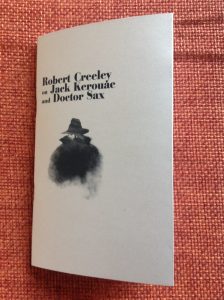
The mailout on the latest Beat Scene Press chapbook is done and dusted. UK and European orders should be there in a day or two. American orders should be there in a week, maybe ten days. Thank you all for your interest.
ROBERT CREELEY on JACK KEROUAC and DOCTOR SAX is the 70th chapbook in the Beat Scene Series. It is an edition of 200 numbered copies in the usual series format. Robert Creeley speaks at length about his take on one of Kerouac’s ‘Lowell books.’ Kerouac recalls his childhood and his dreams of an era growing up in the 1920s and early 1930s. If you would like to order a copy please get in touch by email at kevbeatscene@gmail.com
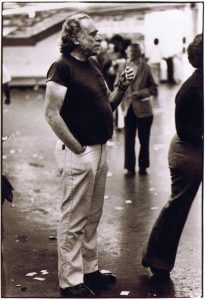 CHARLES BUKOWSKI, had he lived, would have been 100 years old last year. Given the stresses that he put his body under reaching that age would have been highly unlikely. But he lives on, like ‘Bird Lives’ in the minds of his many readers. Matthias Kruger and Rebecca McLeish are two of those readers and together they are Newington Blue Press. Just recently they have issued the second of two volumes celebrating the life and work of Bukowski. BUK 100: NOTES FOR A DIRTY OLD BIRTHDAY (no prizes for guessing what inspired that) is that second volume. The editors and publishers have opted to spend a little on these two editions. Both volumes are nice quality and presentation, with a mix of poetry and prose. There is also a neat balance of recalling personal encounters with Bukowski and stories of connecting with him through letters. Remember letters? It was Bukowski’s favoured means of contact. He didn’t enjoy people turning up on his doorstep, especially in his later years. A bonus is ‘The Bukowski – Hughes Letters,’ a pull out chapbook in itself, where Henry Hughes has his original letters included. The hope is that Newington Blue Press can sustain their progress and come up with innovative ways to keep this series, I hope it is a series, going. Something splendid for you Bukowski fans. Contact them at http://newington.blue/keep-in-touch/
CHARLES BUKOWSKI, had he lived, would have been 100 years old last year. Given the stresses that he put his body under reaching that age would have been highly unlikely. But he lives on, like ‘Bird Lives’ in the minds of his many readers. Matthias Kruger and Rebecca McLeish are two of those readers and together they are Newington Blue Press. Just recently they have issued the second of two volumes celebrating the life and work of Bukowski. BUK 100: NOTES FOR A DIRTY OLD BIRTHDAY (no prizes for guessing what inspired that) is that second volume. The editors and publishers have opted to spend a little on these two editions. Both volumes are nice quality and presentation, with a mix of poetry and prose. There is also a neat balance of recalling personal encounters with Bukowski and stories of connecting with him through letters. Remember letters? It was Bukowski’s favoured means of contact. He didn’t enjoy people turning up on his doorstep, especially in his later years. A bonus is ‘The Bukowski – Hughes Letters,’ a pull out chapbook in itself, where Henry Hughes has his original letters included. The hope is that Newington Blue Press can sustain their progress and come up with innovative ways to keep this series, I hope it is a series, going. Something splendid for you Bukowski fans. Contact them at http://newington.blue/keep-in-touch/
——————————————————————–
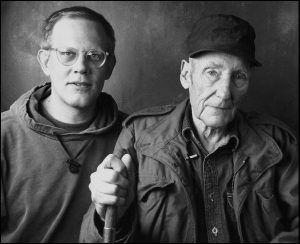
Fascinating and quite recent interview podcast with James Grauerholz, dating from August 2020. Running at well over an hour in duration. James Grauerholz is reflective, measured and honest in his thoughts as he discusses his life working with William Burroughs. Go here to listen.
————————————————————————————-
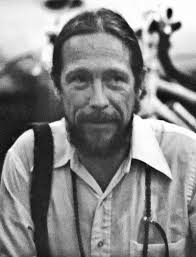 Gary Snyder ‘Japhy Ryder’ to many even today – was 90 a few days ago. Here’s a photo of Gary in the 1970s – sadly Gary is the sole survivor from the band of poets to read at the 6 Gallery event back in 1955. Lawrence Ferlinghetti was there in the audience of course. In these times of increasing self reliance Gary is an inspiration.
Gary Snyder ‘Japhy Ryder’ to many even today – was 90 a few days ago. Here’s a photo of Gary in the 1970s – sadly Gary is the sole survivor from the band of poets to read at the 6 Gallery event back in 1955. Lawrence Ferlinghetti was there in the audience of course. In these times of increasing self reliance Gary is an inspiration.
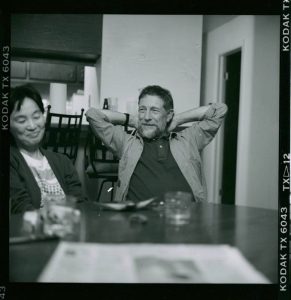
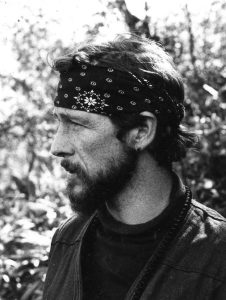

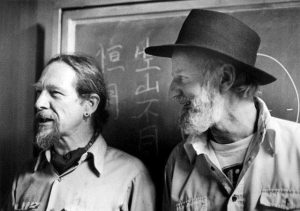
—————————————————————————————————–
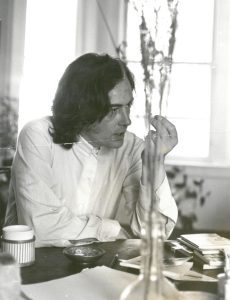 Michael McClure has died aged 87 at the home in Oakland, California that he shared with his wife Amy. He had suffered serious ill health in the past year. Last year a heart attack, a stroke and then Sepsis. As far as I understood he was recuperating though frail. The hope was that he might pull through. He was one of that little band of poets who read at the 6 Gallery in San Francisco in 1955. A gathering that was to prove a landmark in American poetry and in a much wider sense as well. More later.
Michael McClure has died aged 87 at the home in Oakland, California that he shared with his wife Amy. He had suffered serious ill health in the past year. Last year a heart attack, a stroke and then Sepsis. As far as I understood he was recuperating though frail. The hope was that he might pull through. He was one of that little band of poets who read at the 6 Gallery in San Francisco in 1955. A gathering that was to prove a landmark in American poetry and in a much wider sense as well. More later.
———————————————————————————————-
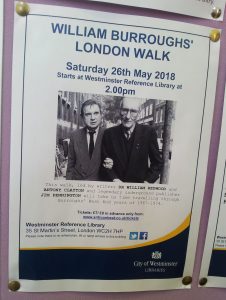
From the Burroughs and BBC vaults – 1982 outtakes from the Arena documentary all about William Burroughs and meeting up with his old friend artist Francis Bacon at Bacon’s small flat in Kensington, London. 11 minutes in duration. https://www.youtube.com/watch?v=2HZPvg671R0&feature=share
———————————————————————————————————–
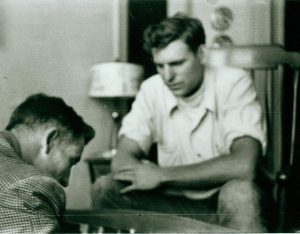 Tributes continue to come in for Al Hinkel who has died in the past couple of days. Neal Cassady’s best friend. Here’s a tribute from The San Francisco Chronicle which reveals a steady, loyal man who wanted no fuss. https://www.sfchronicle.com/bayarea/article/Al-Hinkle-railroad-man-and-character-in-13496805.php
Tributes continue to come in for Al Hinkel who has died in the past couple of days. Neal Cassady’s best friend. Here’s a tribute from The San Francisco Chronicle which reveals a steady, loyal man who wanted no fuss. https://www.sfchronicle.com/bayarea/article/Al-Hinkle-railroad-man-and-character-in-13496805.php
————————————————————————————————–
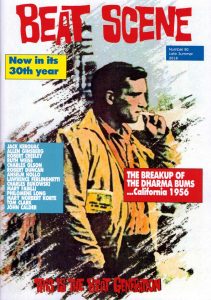 Beat Scene 90 is still available. Here’s a cover image. The issue features Jack Kerouac, Allen Ginsberg, Robert Creeley (a transcript of a talk), Ruth Weiss, Charles Olson, Robert Duncan, Anselm Hollo, Lawrence Ferlinghetti, Charles Bukowski, Mary Fabilli, Mary Norbert Korte, Philomene Long, Tom Clark and John Calder & more. The issue also marks thirty years of Beat Scene. In all there have been about 95 issues, taking into account the special issues that had no number. The Beat Scene press has also published four paperbacks, twelve broadsides, twenty five issues of Transit magazine, and sixty five chapbooks, plus ten other chapbooks. Oh and one film. On we go, infinity and beyond. Issues are £8 including post in the UK. 15 Euros including post in Europe and $20 USA dollars including post outside of Europe, America, Australia, Japan and elsewhere. contact me at kevbeatscene@gmail.com
Beat Scene 90 is still available. Here’s a cover image. The issue features Jack Kerouac, Allen Ginsberg, Robert Creeley (a transcript of a talk), Ruth Weiss, Charles Olson, Robert Duncan, Anselm Hollo, Lawrence Ferlinghetti, Charles Bukowski, Mary Fabilli, Mary Norbert Korte, Philomene Long, Tom Clark and John Calder & more. The issue also marks thirty years of Beat Scene. In all there have been about 95 issues, taking into account the special issues that had no number. The Beat Scene press has also published four paperbacks, twelve broadsides, twenty five issues of Transit magazine, and sixty five chapbooks, plus ten other chapbooks. Oh and one film. On we go, infinity and beyond. Issues are £8 including post in the UK. 15 Euros including post in Europe and $20 USA dollars including post outside of Europe, America, Australia, Japan and elsewhere. contact me at kevbeatscene@gmail.com
——————————————————————————–
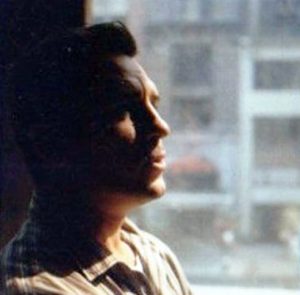 The annual Lowell Celebrates Kerouac event has been happening in his hometown recently. A much bigger event by far than the very first one I managed to get to in 1981. Then it amounted to a couple of hours in an empty storefront on Merrimack Street. The place filled up with maybe a hundred people. Recall all the seats being taken and lots of people standing at the back. Stella Sampas was there, sitting just along from me. Jack’s poignant reading of NEAL AND THE THREE STOOGES was played and you could hear a pin drop. Remember this was pre-internet and it is likely that not everyone present had heard Kerouac before. There were cassettes circulating of Jack reading this particular piece. As Jack read on you could hear Stella crying a little and we all felt for her. It was a lovely evening. And I think quite a number of people who lived in Lowell and some I’d met early in the 1970s onwards – who quietly kept Kerouac’s name alive in the town in the face of general indifference and apathy – even hostility – Jack Who? was a regular refrain – these Kerouac devotees – people like Jay McHale, Brian Dean, Martha Mayo, Charlie Garguilio, Pat Pestana, Henry Hefco, Mary King, Dean Contover, and a few others must have felt the tide was turning a little. So this celebration must be a lot of fun for all those who are curious about Jack Kerouac. Today of all days, 49 years since he died.
The annual Lowell Celebrates Kerouac event has been happening in his hometown recently. A much bigger event by far than the very first one I managed to get to in 1981. Then it amounted to a couple of hours in an empty storefront on Merrimack Street. The place filled up with maybe a hundred people. Recall all the seats being taken and lots of people standing at the back. Stella Sampas was there, sitting just along from me. Jack’s poignant reading of NEAL AND THE THREE STOOGES was played and you could hear a pin drop. Remember this was pre-internet and it is likely that not everyone present had heard Kerouac before. There were cassettes circulating of Jack reading this particular piece. As Jack read on you could hear Stella crying a little and we all felt for her. It was a lovely evening. And I think quite a number of people who lived in Lowell and some I’d met early in the 1970s onwards – who quietly kept Kerouac’s name alive in the town in the face of general indifference and apathy – even hostility – Jack Who? was a regular refrain – these Kerouac devotees – people like Jay McHale, Brian Dean, Martha Mayo, Charlie Garguilio, Pat Pestana, Henry Hefco, Mary King, Dean Contover, and a few others must have felt the tide was turning a little. So this celebration must be a lot of fun for all those who are curious about Jack Kerouac. Today of all days, 49 years since he died.
———————————————————
Anne Waldman’s new book, TRICKSTER FEMINISM is out now. Co-founder with Allen Ginsberg of the Naropa School in Colorado, Anne has been a lively presence on the American poetry scene since the 1960s. She combines poetry with an active interest and participation in…well, just go to this very new interview with her in the American online journal TRICYCLE…
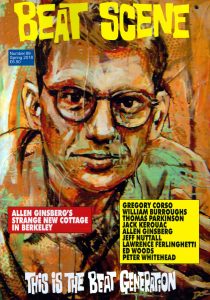
Beat Scene 89 is out now, all subscriber copies have been posted. Sorry for delay. Long stories. The final article included is ‘Allen Ginsberg’s Strange New Cottage in Berkeley.’ Which has a sharp focus on Allen’s time at 1624 Milvia Street. The time of HOWL being put together and finalised. Of the real Dharma Bums – including Henry Morley (or John Montgomery in real life), Gary Snyder, Philip Whalen, Kerouac and others. The long essay was partly sparked by Tom Dalzell’s little article for the online site Berkeleyside.
See……
Flashback: Allen Ginsberg’s ‘Strange New Cottage in Berkeley’
— back in March – where previously unseen photos of the long vanished cottage by Dennis Starleaf, who lived in the cottage as a student in 1958/59 can be seen. The essay in Beat Scene 89 was also written because, simply, this phase of the Beat Generation seems one of the more joyous interludes. Here’s one of Dennis Starleaf’s photos of the Milvia cottage (above). If you would like to order a copy of Beat Scene 89 please email me at kevbeatscene[at]gmail.com
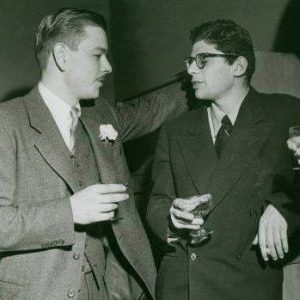 In Beat Scene 89, an interview with Lois Sorrells Beckwith, who was ‘Louise’ in Jack Kerouac’s novel ‘Big Sur.’ Lois and Jack had a relationship and an enduring friendship. She also had a relationship with Lucien Carr – (see Lucien here with Allen Ginsberg) – during the early 1960s. This little article by Maria Papova appeared on the site Brain Pickings back in 2015. At the end Lois reads her poem about Kerouac travelling a big journey to help her in her grief after her mother had died.
In Beat Scene 89, an interview with Lois Sorrells Beckwith, who was ‘Louise’ in Jack Kerouac’s novel ‘Big Sur.’ Lois and Jack had a relationship and an enduring friendship. She also had a relationship with Lucien Carr – (see Lucien here with Allen Ginsberg) – during the early 1960s. This little article by Maria Papova appeared on the site Brain Pickings back in 2015. At the end Lois reads her poem about Kerouac travelling a big journey to help her in her grief after her mother had died.
https://www.brainpickings.org/?s=jack+kerouac
————————————————————————————————–
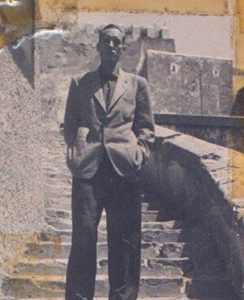 I had thought all copies of the William Burroughs Special issue from Winter 2014 had all gone but a handful remain. This is a bigger 72 page number and was published to mark what would have been the centenary of his birth. It includes the very first interview he did back in 1961. Other features include Ed Dorn on Burroughs, Thom Robinson on WSB and Truman Capote, a Jack Kerouac letter to Burroughs, David Ohle on Burroughs in Kansas, Burroughs in conversation with Anne Waldman, Oliver Harris talking with Burroughs, James Grauerholz talking about him and more besides. If this interests you, get in touch. Copies are £8.50 including postage in the UK. Overseas please email kevbeatscene@gmail.com
I had thought all copies of the William Burroughs Special issue from Winter 2014 had all gone but a handful remain. This is a bigger 72 page number and was published to mark what would have been the centenary of his birth. It includes the very first interview he did back in 1961. Other features include Ed Dorn on Burroughs, Thom Robinson on WSB and Truman Capote, a Jack Kerouac letter to Burroughs, David Ohle on Burroughs in Kansas, Burroughs in conversation with Anne Waldman, Oliver Harris talking with Burroughs, James Grauerholz talking about him and more besides. If this interests you, get in touch. Copies are £8.50 including postage in the UK. Overseas please email kevbeatscene@gmail.com
—————————————————————————–
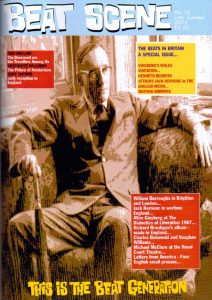
For those who might be interested in the Beats and Britain – issue 74 from Summer 2014 – will be of interest. Many of the Beats visited Britain and even lived here. William Burroughs for one – he is featured on the cover of this issue. See above. The visits of Jack Kerouac, Allen Ginsberg, Michael McClure, Gary Snyder, John Clellon Holmes, Lawrence Ferlinghetti and others are featured. If this is of interest – get in touch at kevbeatscene(at)gmail.com
—————————————————
People have asked about the Beat Scene Press chapbook series. Here is a listing of all 64 so far.
The BEAT SCENE PRESS CHAPBOOK SERIES
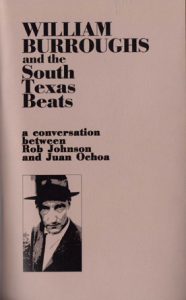
Some chapbooks are sold out.
Prices listed are for UK only including post.
For Europe each chapbook is 15 Euros including post.
Outside Europe, USA, Japan, Australia etc each chapbook is $17 USA.
Small discounts are given for multiple orders.
Number 1
I’m Bukowski, And Then..by Enrico
Francheschini
Published in an edition of one hundred copies in September 1997.
A second issue of one hundred copies was published in July 2005 — £9
Number 2
Downstream From Trout Fishing In America:
A Memoir of Richard Brautigan – a brief extract
by Keith Abbott
published in an edition of one hundred copies in March 1998 — £9
Number 3
Marble Man by Dan Fante
Published in an edition of two hundred copies in April 2002 — sold out
Number 4
Jack Kerouac in San Francisco by Tom Clark published in an edition of one hundred and twenty five copies in March 2006. The first twenty five copies were signed by Tom Clark — sold out
Number 5
Letters Home From Cambridge 1963-1965 by Tom Clark..Published in an edition of one hundred signed and numbered copies, September 2006 — sold out
Number 6
High Peak Haikus: An Interview With Gary Snyder by James Campbell.
One hundred numbered copies were published in December 2006 — sold out
Number 7
The Sad And Lonely Death of Richard Brautigan by Kevin Ring
Published in an edition of one hundred copies in January 2007 — £9
Number 8
A Fierce God And A Fierce War: An Interview With Michael McClure by Rod Phillips..Published in an edition of one hundred signed and numbered copies in March 2007 — Sold Out
Number 9
Jack Kerouac At 681 Lexington Avenue by Elizabeth Von Vogt
Published in an edition of one hundred and fifty numbered and signed copies in May 2007 — sold out
Number 10
Arizona Highway & Other Poems by Dan Fante
Published in an edition of one hundred and twenty five signed and numbered copies in July 2007 — sold out
Number 11
Mutate Or Die: With Burroughs In Kansas by David Ohle.
Published in an edition of one hundred and twenty five signed and numbered copies in August 2007. – sold out
Number 12
Ben Pleasants….Rexroth, Bukowski and the Politics of Literature
125 numbered copies issued October 2007…£9
Number 13
Gordon Ball…Scenes From East Hill Farm: Seasons with Ginsberg
125 signed and numbered copies October 2007….sold out
Number 14
Charles Plymell…Neal and Anne at Gough Street
125 signed and numbered copies, February 2008…sold out
Number 15
Charles Bukowski: Letters to Beat Scene
125 numbered copies April 2008…sold out
Number 16
John Clellon Holmes…Remembering Jack Kerouac
125 numbered copies May 2008 …£9
Number 17
Jim Burns…Cool Kerouac
100 numbered & signed copies June 2008…£8
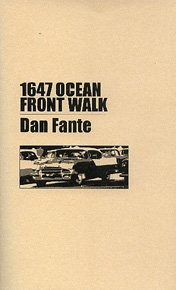 Number 18
Number 18
Dan Fante…1647 Ocean Front Walk
125 signed & numbered copies issued November 2008….£9
Number 19
Barry Gifford….New Poems
125 numbered copies…issued January 2009…£9
Number 20
Carl Weissner: Charles Bukowski’s Secret Agent
One hundred numbered copies…sold out
Number 21
Tom Pickard…Work Conchy
125 signed and numbered copies June 2009…£9
Number 22
Jack Hirschman – The Game & Other Poems
125 signed and numbered copies. Issued August 2009…sold out
Number 23
Philip Lamantia…Letter From San Francisco
125 numbered copies issued September 2009 …£9
Number 24
John Fante: A Conversation with Ben Pleasants
125 numbered copies issued January 2010 – £9
Number 25
Charles Bukowski: Censorship Does Pay by Abel Debritto
125 numbered copies issued March 2010 – sold out
Number 26
Letters From Lew Welch
125 numbered copies issued July 2010 – £9
Number 27
The Last Days of Jack Kerouac by James Birmingham
125 numbered copies issued September 2010 – £9
Number 28
Iain Sinclair – American Smoke
125 numbered and signed copies November 2010 – £9
Number 29
Wallace Berman: Verifax Man…by Kevin Ring
125 copies February 2011 – £9
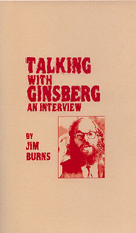 Number 30
Number 30
Talking with Ginsberg by Jim Burns
125 numbered copies May 2011 – £9
Number 31
Al Hinkle: Last Man Standing – An Interview by Steve Edgington
125 numbered copies June 2011 – £9
Number 32
Hope Savage: Mystery Girl by Kevin Ring
125 numbered copes October 2011 – Sold Out
Number 33
Iain Sinclair – The Face On the Fork: A William Burroughs Tryptych
125 numbered and signed copies December 2011 – sold out
Number 34
Philip Whalen – Whatnot: An Interview
125 numbered copes April 2012 – sold out
Number 35
Jack Kerouac’s Last Night In Northport by James Fenton
125 numbered copies June 2012 – sold out
Number 36
Malcolm McNeill – The Lost Artwork of Ah Pook Is Here
125 numbered copies August 2012 – sold out
Number 37
A Moving Target: Encounters with William Burroughs by Matthew Levi Stevens
125 numbered copies October 2012…sold out
Number 38
Iain Sinclair – Kitkitdizzee: Seeing Gary Snyder
125 numbered and signed copies January 2013 – £9
Number 39
Milwaukee: A Memoir About the Making of the film Beat by Gary Walkow
125 numbered copies February 2013 – sold out
Number 40
William S. Burroughs: Our Spiritual Destiny Is In Space – an interview by William Weiss
125 numbered copies May 2013 – £9
Number 41
Notes From the Beat Underground: An Interview with Herbert Huncke by John Tytell
125 numbered copies July 2013…sold out
Number 42
Bob Dylan in Jack Kerouac’s Lowell – 1975 by Kevin Ring
125 numbered copies September 2013 – sold out
Number 43
Charles Bukowski and John Martin: The Red Vulture Men by Kevin Ring
125 numbered copies March 2014 – sold out
Number 44
Neal’s Ashes by Gina Berriault
125 numbered copies May 2014 – £9
Number 45
Charles Bukowski – FIVE by Neeli Cherkovski
125 numbered copies June 2014 – sold out
Number 46
Cite Scout For the Territory: An Interview About an in-progress bibliography of the works of Iain Sinclair with Jeff Johnson
125 numbered copies August 2014 – sold out
Number 47
Jack Foley – A California Literary Timeline-The 1950s
125 numbered copies October 2014 – sold out
Number 48
Bob Dylan Thunders Into Lowell by Kevin Ring
125 numbered copies March 2015 – sold out
Number 49
Gregory Corso Beat Maverick by Jim Burns
125 numbered copies September 2015 – £9
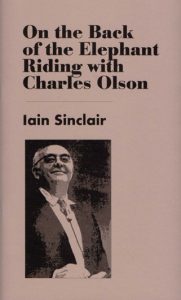 Number 50
Number 50
On the Back of the Elephant: Riding With Charles Olson by Iain Sinclair
125 numbered and signed copies December 2015 – £9
Number 51
Kerouac’s Literary Method and Experiments by Ann Charters
125 numbered copies March 2016 – £9
Number 52
Ed Sanders – Still Thirsting For Peace: An Interview
125 numbered copies June 2016 – £9
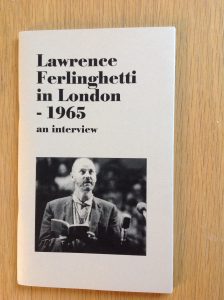 Number 53
Number 53
Lawrence Ferlinghetti: London 1965: An Interview
125 numbered copies August 2016 – £9
Number 54
Ken Kesey Goes Furthur: An Interview with Allan Balliett
125 numbered copies September 2016 – £8
Number 55
Alan Moore and Iain Sinclair: A Funny Kind of Relationship: Alan Moore an interview
125 numbered copies November 2016 – £8
Number 56
Hank and Neal: A Crazy Ride by Jean Francois Duval
125 numbered copies January 2017….£8
Number 57
No Sleep till Gloucester: Searching For Charles Olson by James Birmingham
125 numbered copies March 2017…£8
Number 58
Bob Dylan and the Beats: Magpie Poetics by Anne Waldman
125 numbered copies May 2017…£8.50
Number 59
The Auerhahn Press: A Constant Flying By Night: An Interview with publisher Dave Haselwood
125 numbered copies June 2017…£8
Number 60
William Burroughs and the South Texas Beats: A Conversation between Rob Johnson and Juan Ochon…
125 numbered copies July 2017…£8.50
Number 61
On the Road with Jack Kerouac in Hyannis by Ann Charters
125 numbered copies August 2017…£8.50
Number 62
Hit the Road Jack: Jack Kerouac’s Short Time in the U.S. Naval Reserve by Miriam Kleiman
125 numbered copies November 2017…£8
Number 63
Charles Bukowski and Ernest Hemingway: Barfly & Bullfighter by Aubrey Malone
March 2018…125 numbered copies at £8
Number 64
Playing For Keeps by Peter Coyote
April 2018
125 numbered copies at £8
————————————————————————-
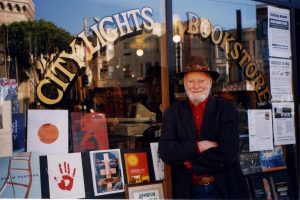 LAWRENCE FERLINGHETTI
LAWRENCE FERLINGHETTI
On Saturday March 24 Lawrence Ferlinghetti was 99. I’ve admired him ever since I first heard of him in the wake of first discovering Kerouac in the early 1970s. His ability to be a poet and have a creative life alongside running a business – City Lights bookstore and publishing house – deserves respect. He is famous for publishing many of the writers who come under that big Beat Generation umbrella of course, Burroughs, Ginsberg, Kerouac, Corso, Snyder, McClure, Bukowski, Lamantia, Welch, Cassady, Watts and so on – and he’s published many European and South American writers over the years and been a dissenter. Remember the slogan banner that was draped over the frontage of City Lights in recent years ‘Dissent is Not UnAmerican.’ It seems to carry the spirit of Henry David Thoreau into our modern age. He has been a protestor against the greed driven advances of corporate America for decades. He is far more than a poet and a very good publisher and bookseller. I could go on. I won’t. Here is Ferlinghetti’s poem I Am Waiting. For me it encapsulates much of what he has said over the years. Happy birthday Lawrence Ferlinghetti.
I AM WAITING
I am waiting for my case to come up
and I am waiting
for a rebirth of wonder
and I am waiting
for someone to really discover America
and wail
and I am waiting
for the discovery
of a new symbolic western frontier
and I am waiting
for the American Eagle
to really spread its wings
and straighten up and fly right
and I am waiting
for the Age of Anxiety
to drop dead
and I am waiting
for the war to be fought
which will make the world safe
for anarchy
and I am waiting
for the final withering away
of all governments
and I am perpetually awaiting
a rebirth of wonder
I am waiting for the Second Coming
and I am waiting
for a religious revival
to sweep through the state of Arizona
and I am waiting
for the Grapes of Wrath to be stored
and I am waiting
for them to prove
that God is really American
and I am waiting
to see God on television
piped’ onto church altars
if only they can find
the right channel
to tune in on
and I am waiting
for the Last Supper to be served again
with a strange new appetizer
and I am perpetually awaiting
a rebirth of wonder
I am waiting for my number to be called
and I am waiting
for the Salvation Army to take over
and I am waiting
for the meek to be blessed
and inherit the earth
without taxes and I am waiting
for forests and animals
to reclaim the earth as theirs
and I am waiting
for a way to be devised
to destroy all nationalisms
without killing anybody
and I am waiting
for linnets and planets to fall like rain
and I am waiting for lovers and weepers
to lie down together again
in a new rebirth of wonder
I am waiting for the Great Divide to ‘be crossed
and I am anxiously waiting
for the secret of eternal life to be discovered
by an obscure general practitioner
and I am waiting
for the storms of life
to be over
and I am waiting
to set sail for happiness
and I am waiting
for a reconstructed Mayflower
to reach America
with its picture story and tv rights
sold in advance to the natives
and I am waiting
for the lost music to sound again
in the Lost Continent
in a new rebirth of wonder
I am waiting for the day
that maketh all things clear
and I am awaiting retribution
for what America did
to Tom Sawyer
and I am waiting
for the American Boy
to take off Beauty’s clothes
and get on top of her
and I am waiting
for Alice in Wonderland
to retransmit to me
her total dream of innocence
and I am waiting
for Childe Roland to come
to the final darkest tower
and I am waiting
for Aphrodite
to grow live arms
at a final disarmament conference
in a new rebirth of wonder
I am waiting
to get some intimations
of immortality
by recollecting my early childhood
and I am waiting
for the green mornings to come again
youth’s dumb green fields come back again
and I am waiting
for some strains of unpremeditated art
to shake my typewriter
and I am waiting to write
the great indelible poem
and I am waiting
for the last long careless rapture
and I am perpetually waiting
for the fleeing lovers on the Grecian Urn
to catch each other up at last
and embrace
and I am waiting
perpetually and forever
a renaissance of wonder
——————————————-
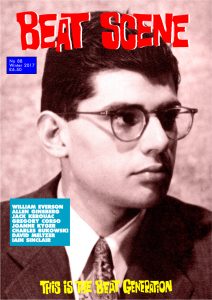
Beat Scene 88 – see above – has been out for a while now. A young, besuited Allen Ginsberg, before he got notorious, famous, before Howl and Kaddish, the 1960s. If you would like a copy get in touch by email kevbeatscene@gmail.com
——————————————————————————————————————-
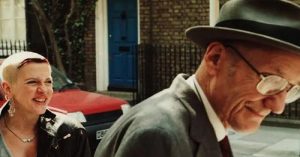 This photo of Kathy Acker and William Burroughs in London probably in the early 1980s? Intrigued me. Is it one by John Minehane? John took some lovely photos of Burroughs with Francis Bacon. Any clued up people out there? No clued up people out there? That does surprise me.
This photo of Kathy Acker and William Burroughs in London probably in the early 1980s? Intrigued me. Is it one by John Minehane? John took some lovely photos of Burroughs with Francis Bacon. Any clued up people out there? No clued up people out there? That does surprise me.
———————————————————————————————
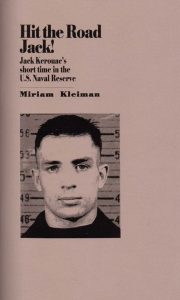 Must also mention Miriam Kleiman’s new HIT THE ROAD, JACK chapbook in the ongoing Beat Scene chapbook series. In this edition of 125 numbered copies Miriam explores Jack Kerouac’s time spent in the US Naval psychiatric unit in the early 1940s, when Kerouac was just twenty years old. Fascinating account where Miriam has access to all Kerouac’s archives there. Please get in touch if this interests you. Single copies in the UK are £9, cheques payable to M.Ring – including post. Europe is 16 Euros & elsewhere $20 USA dollars.
Must also mention Miriam Kleiman’s new HIT THE ROAD, JACK chapbook in the ongoing Beat Scene chapbook series. In this edition of 125 numbered copies Miriam explores Jack Kerouac’s time spent in the US Naval psychiatric unit in the early 1940s, when Kerouac was just twenty years old. Fascinating account where Miriam has access to all Kerouac’s archives there. Please get in touch if this interests you. Single copies in the UK are £9, cheques payable to M.Ring – including post. Europe is 16 Euros & elsewhere $20 USA dollars.
——————————————————————————-


